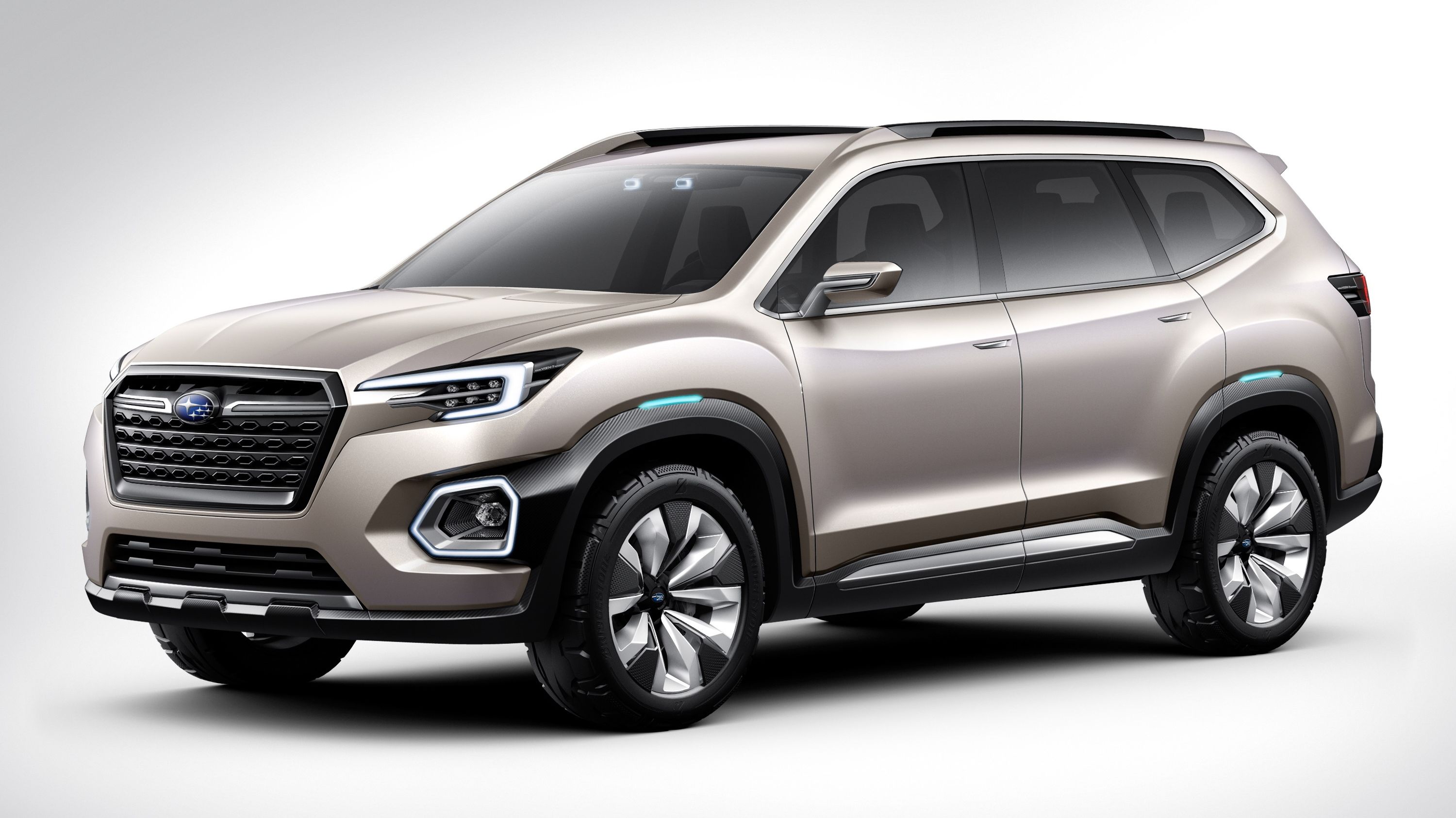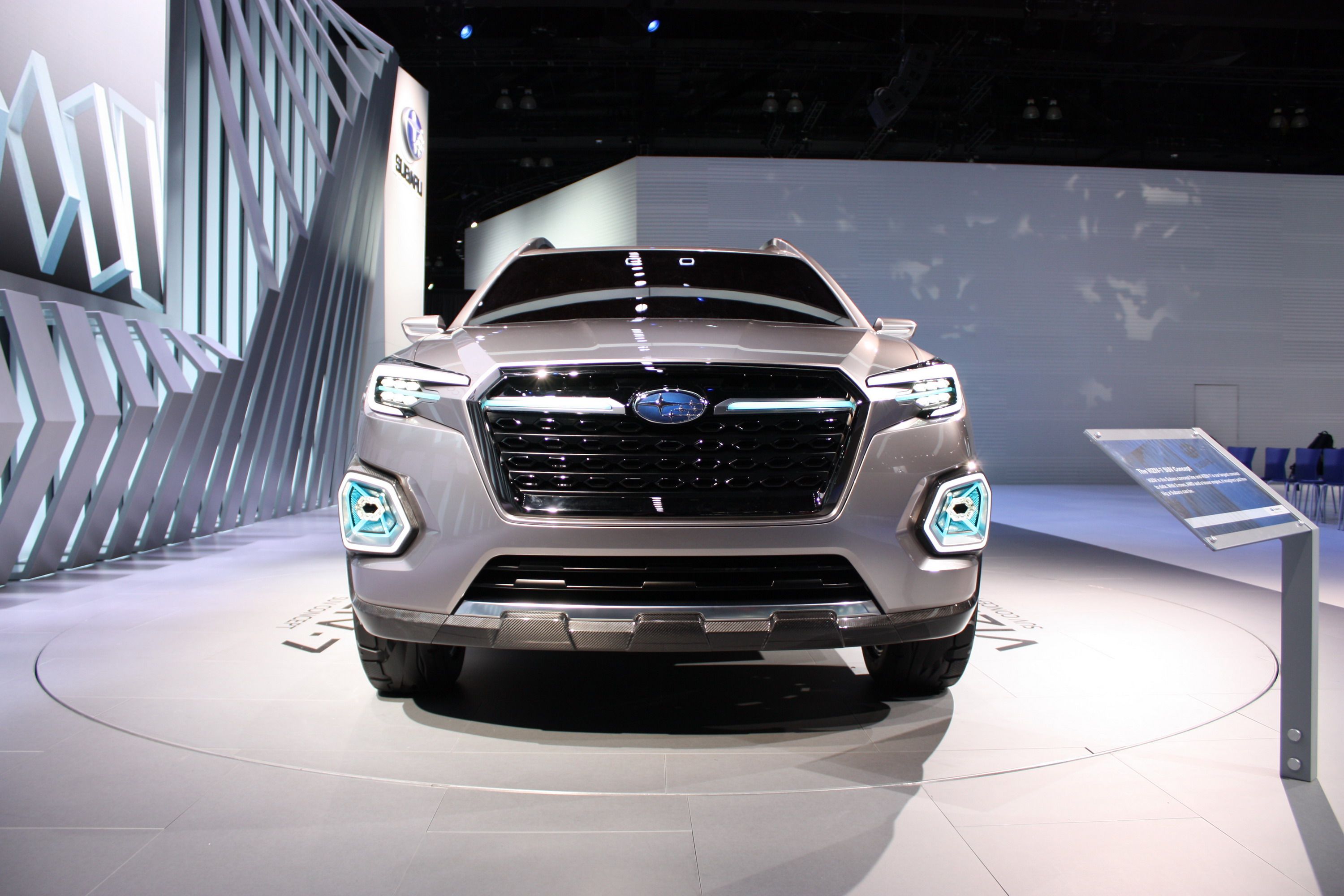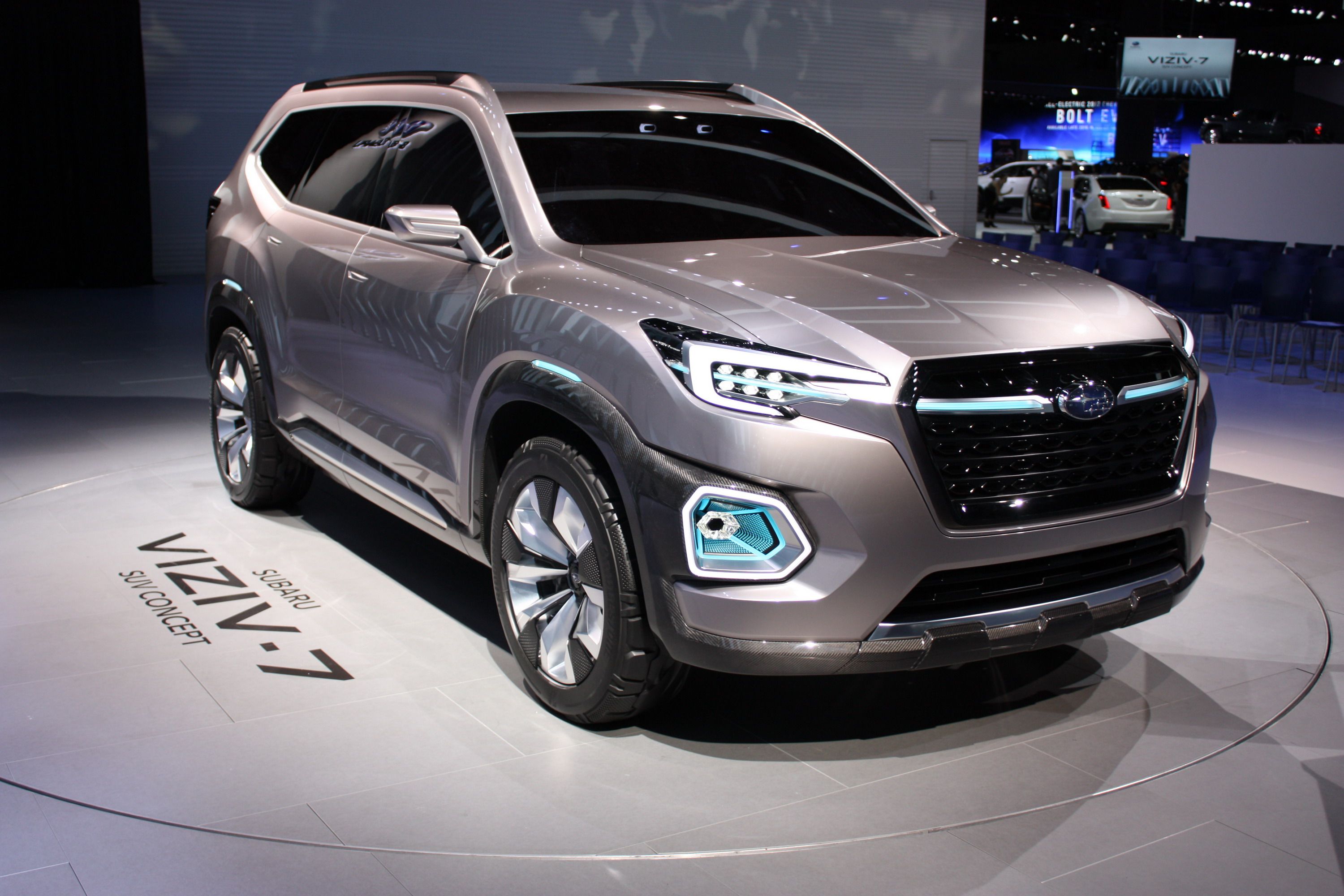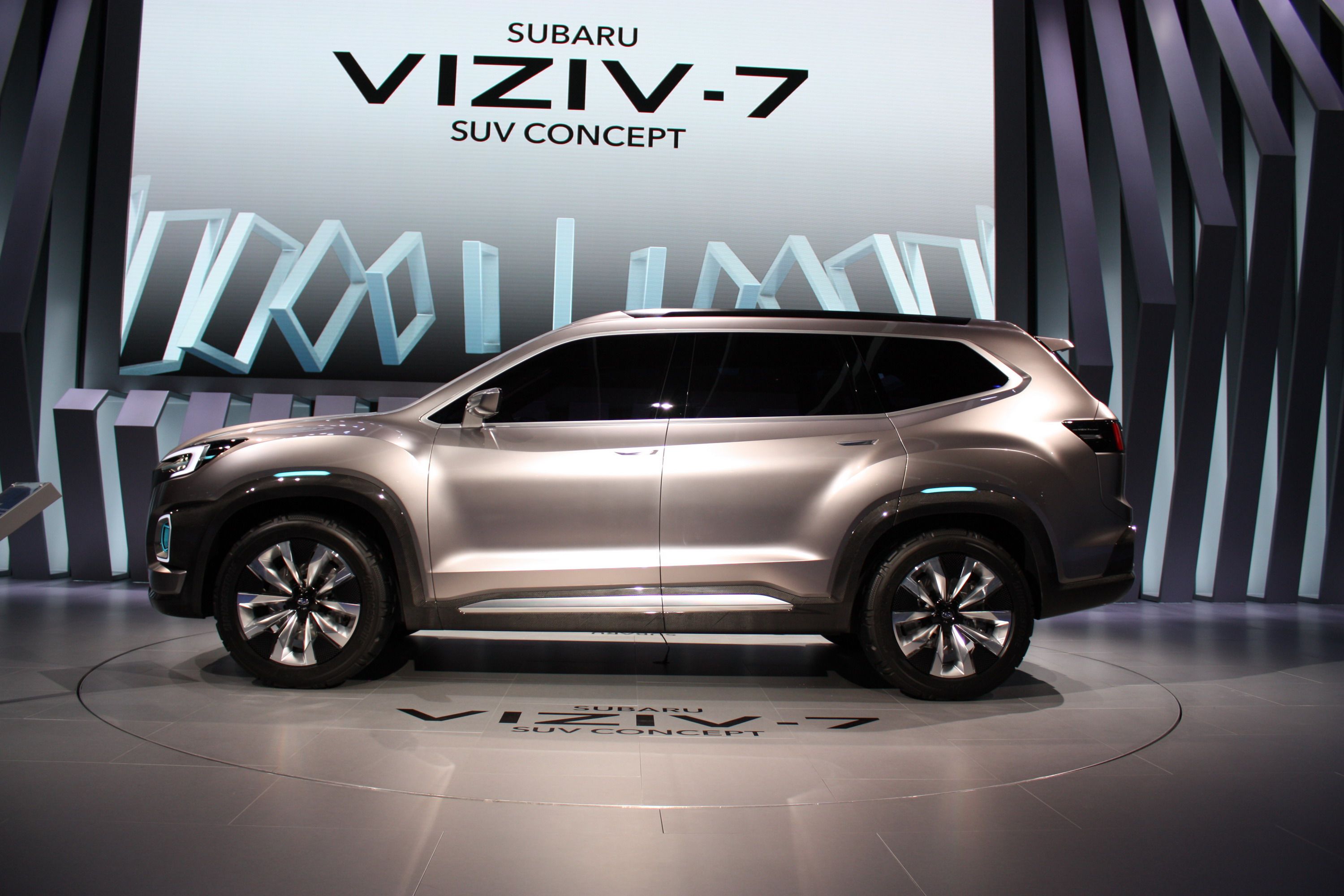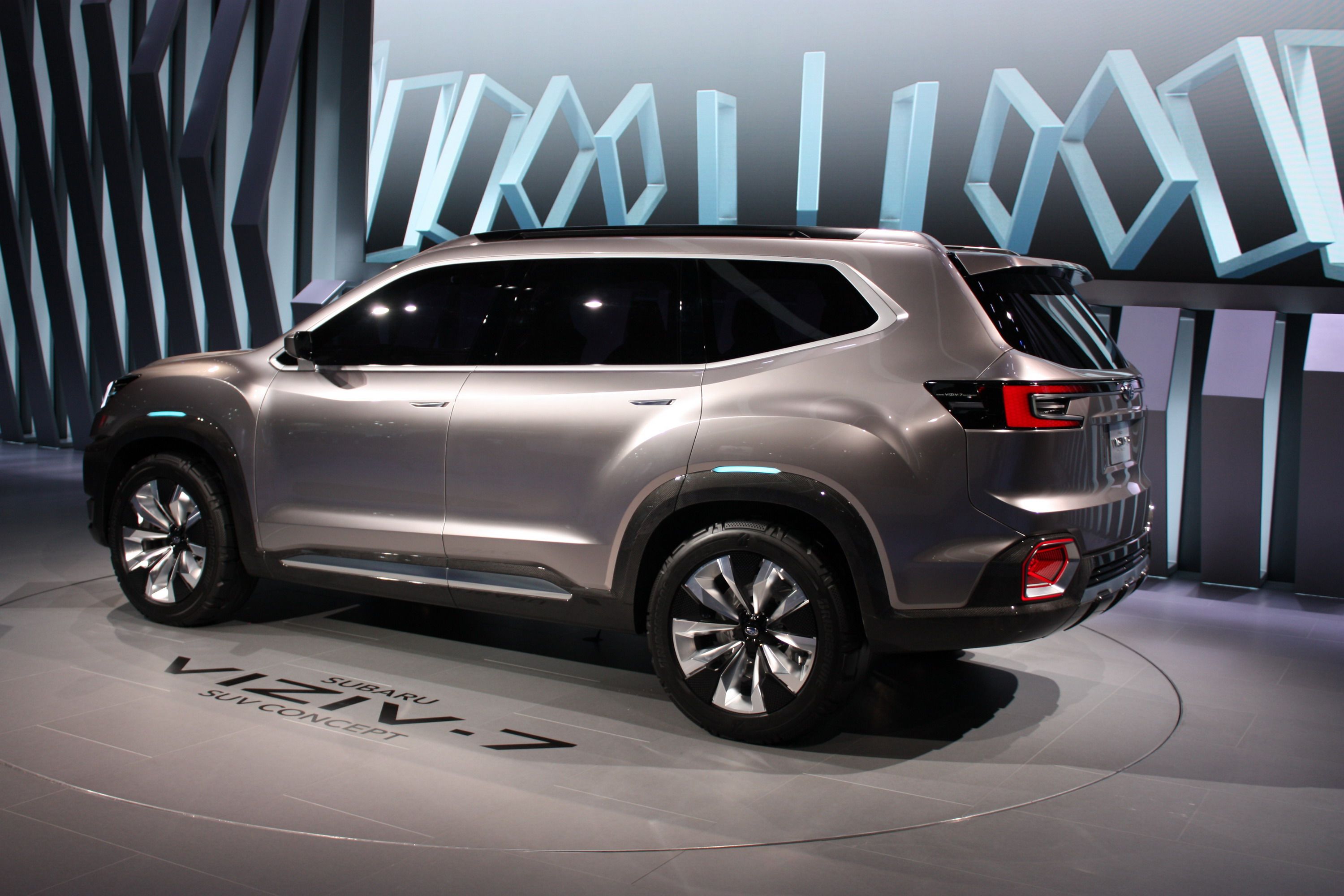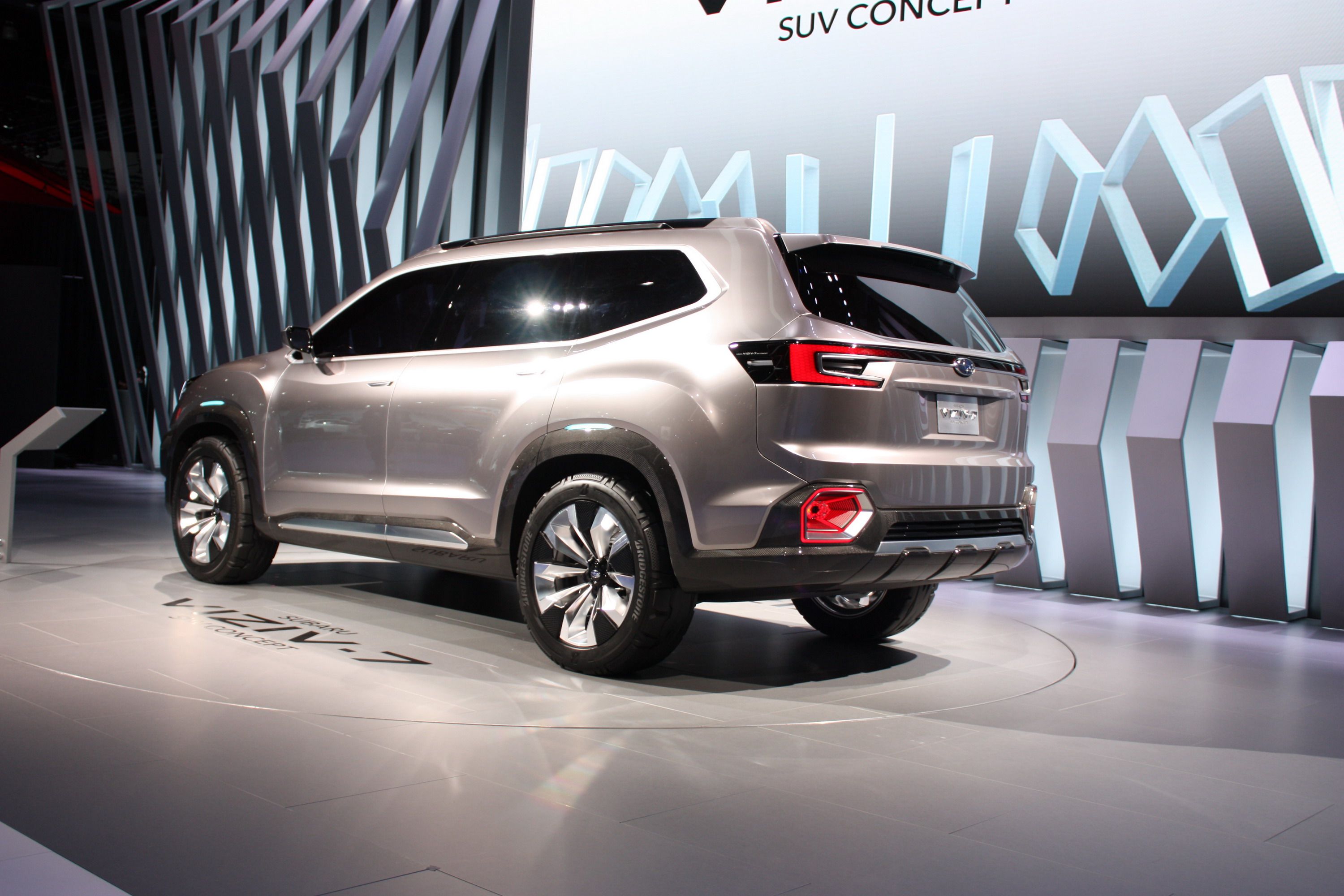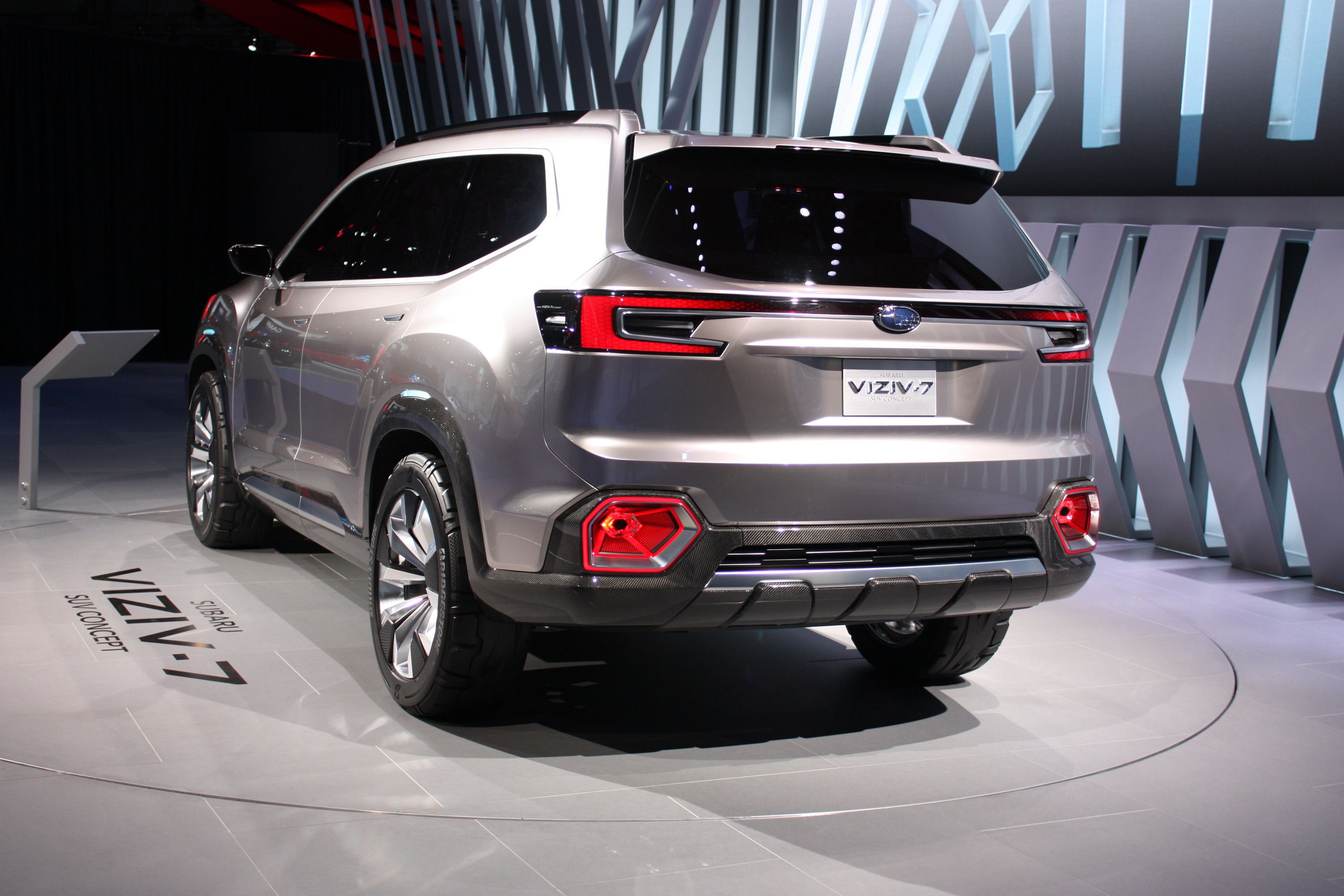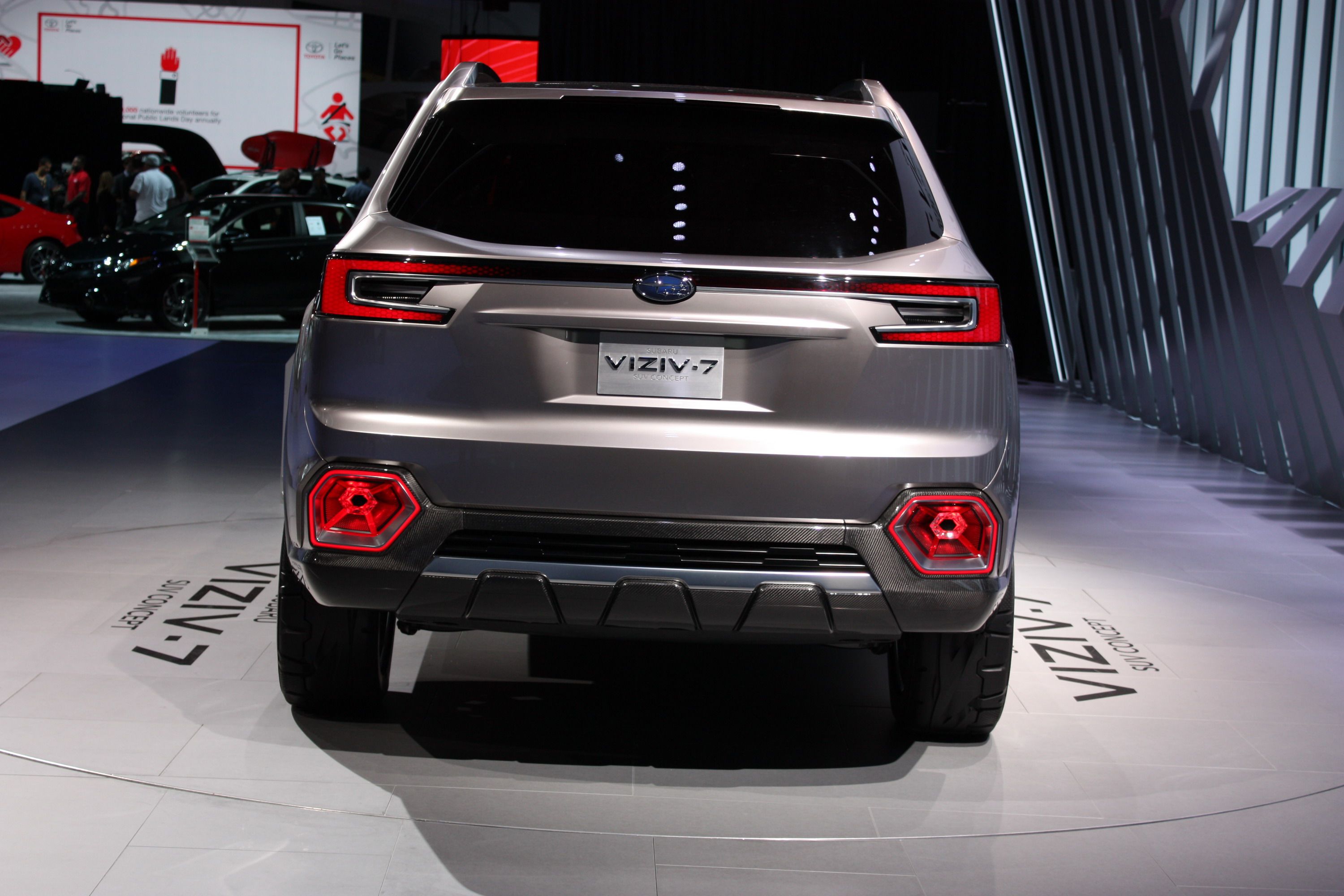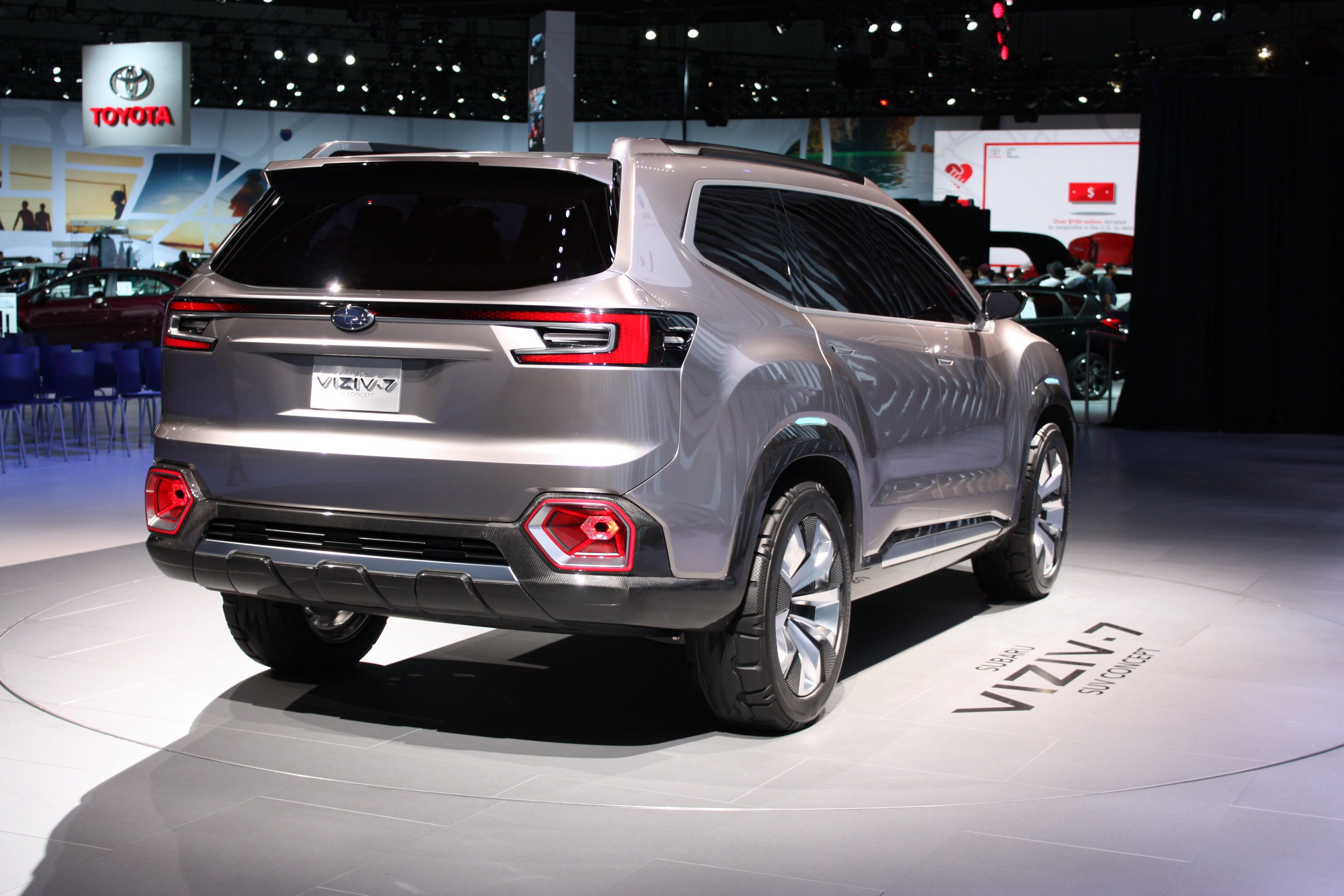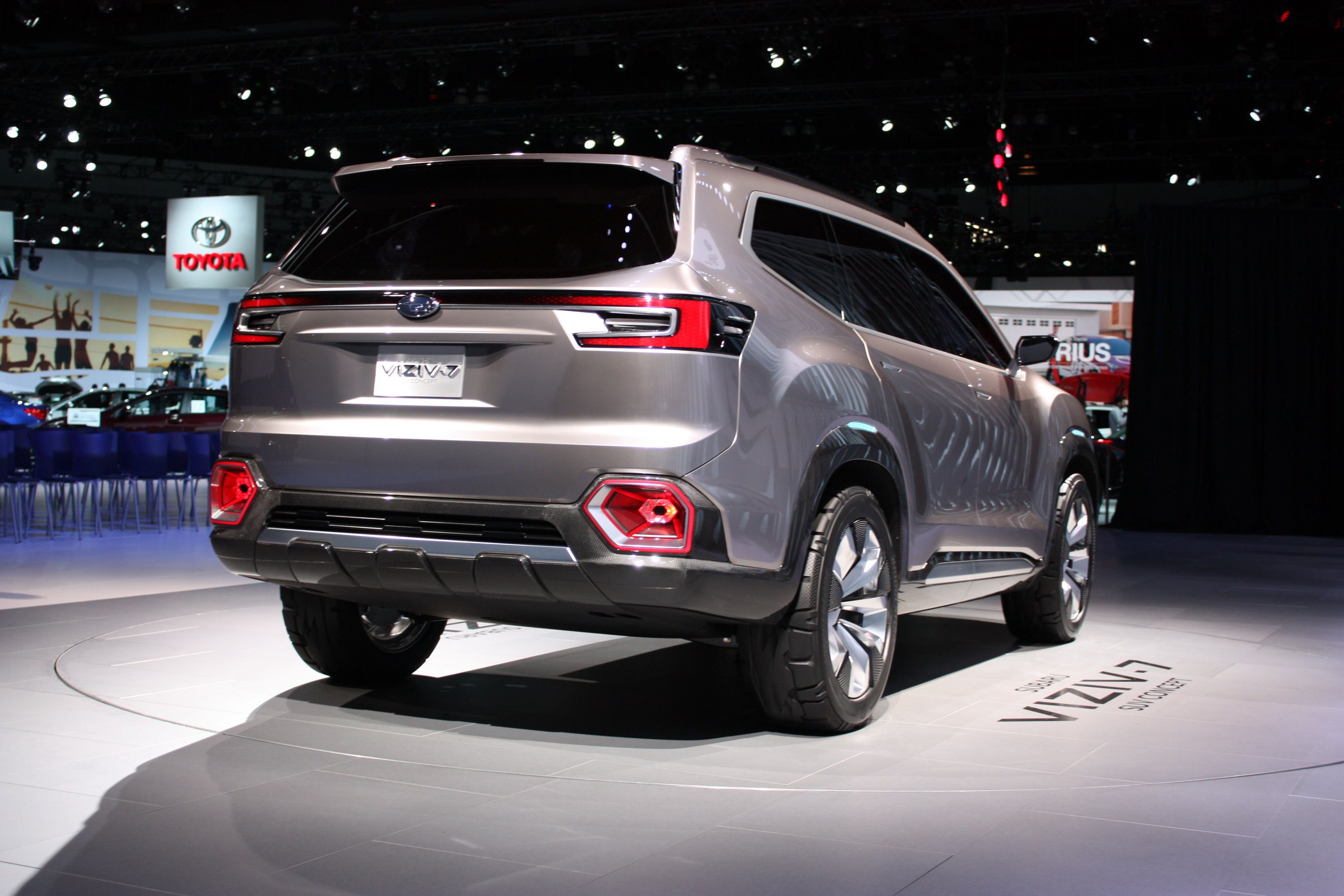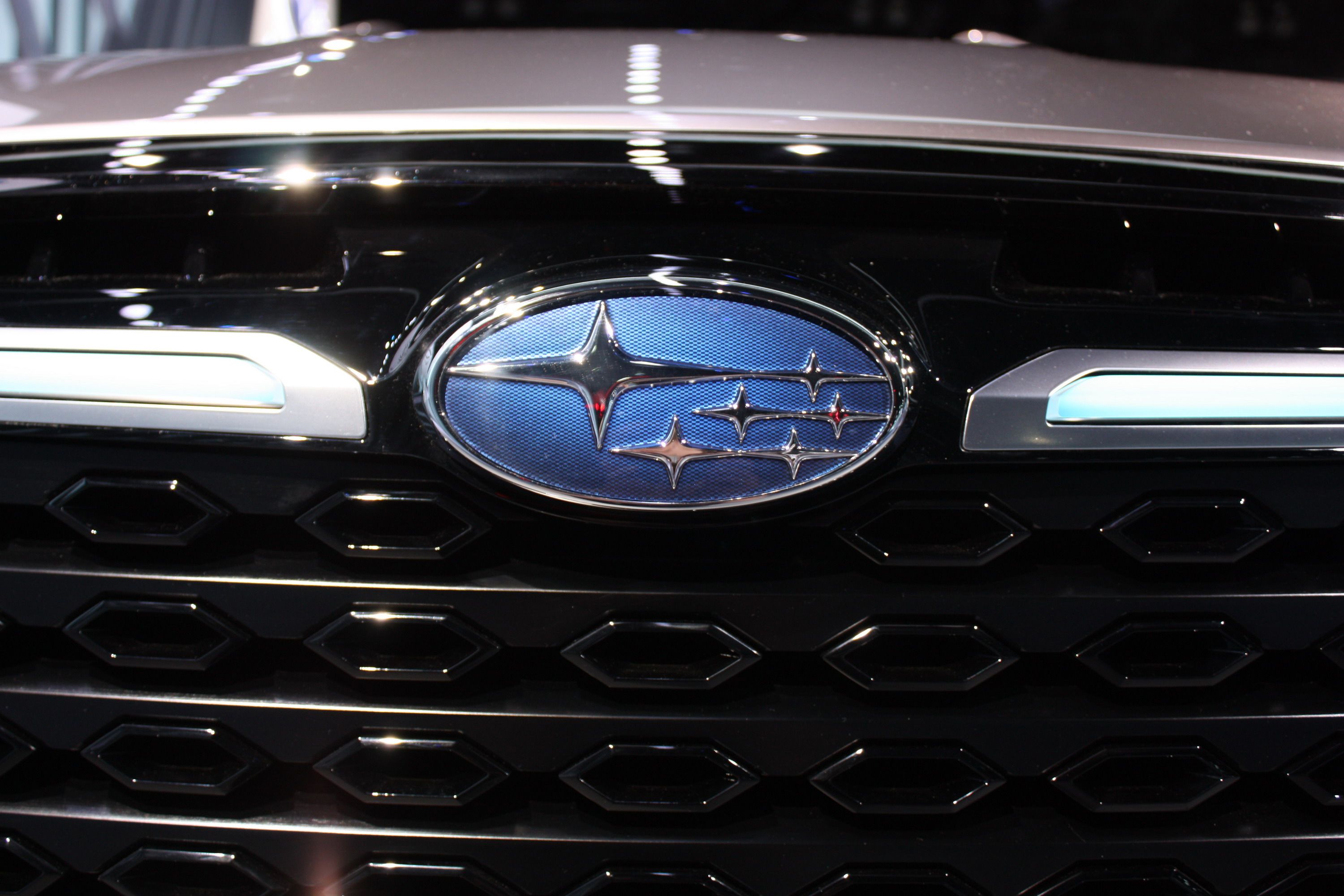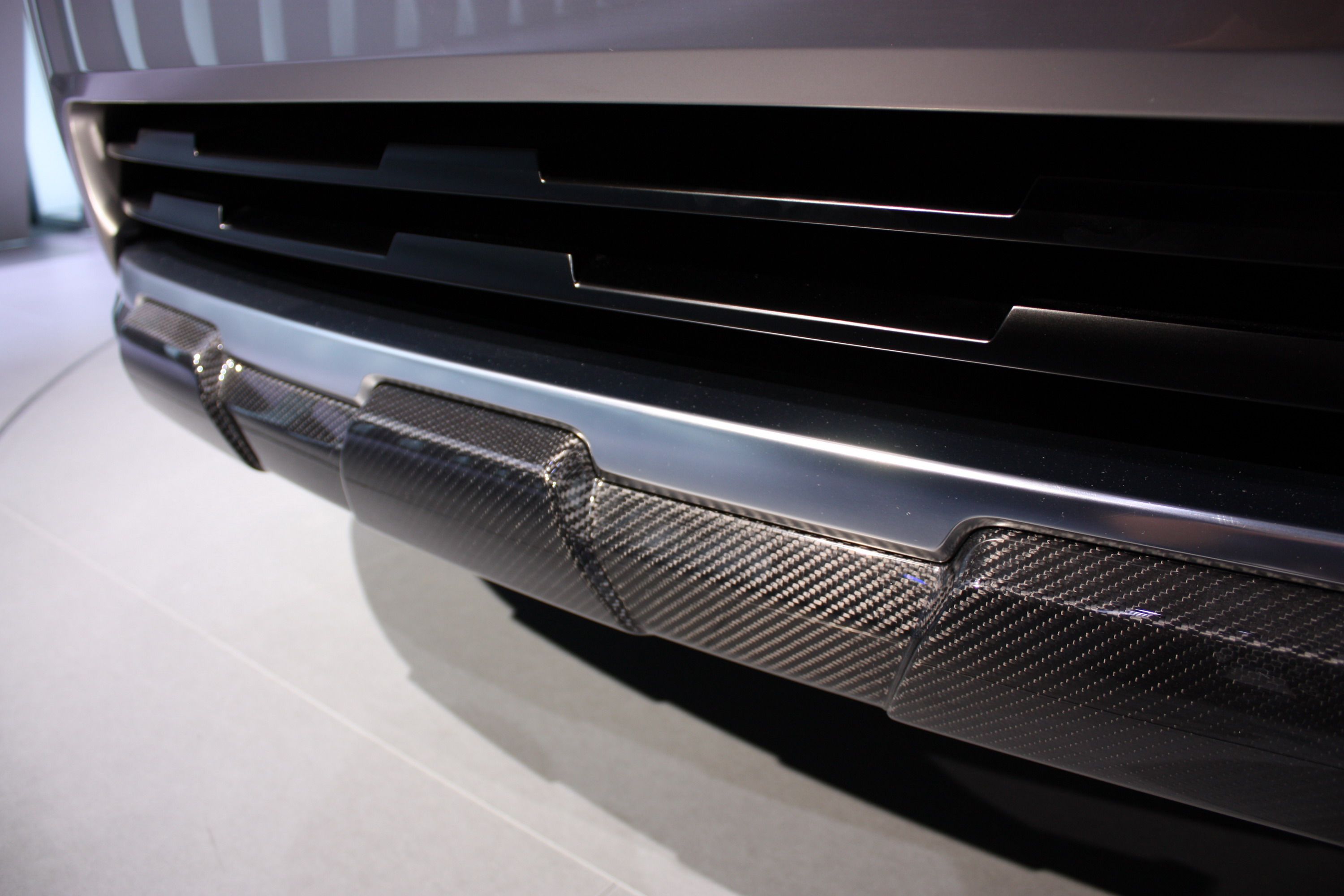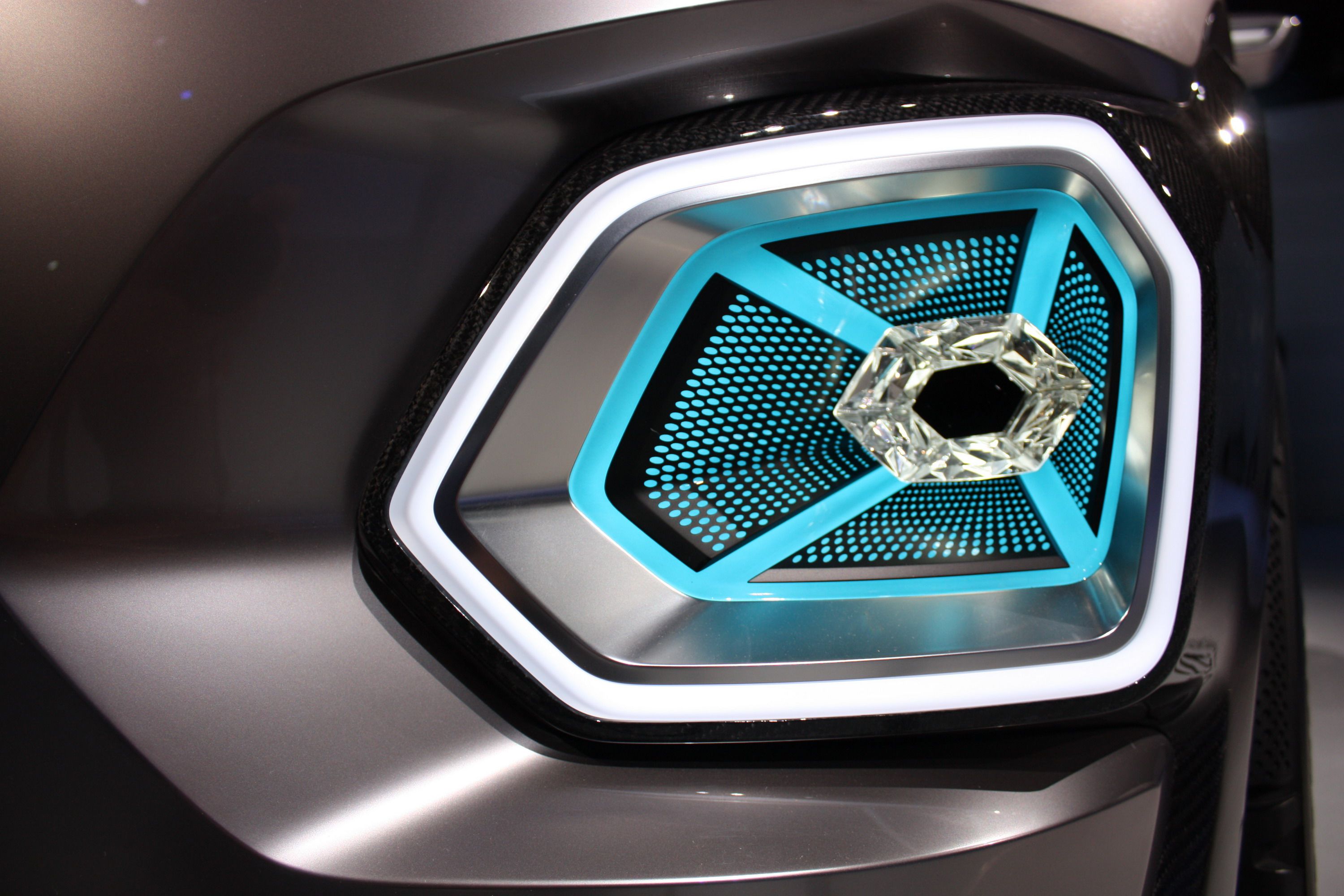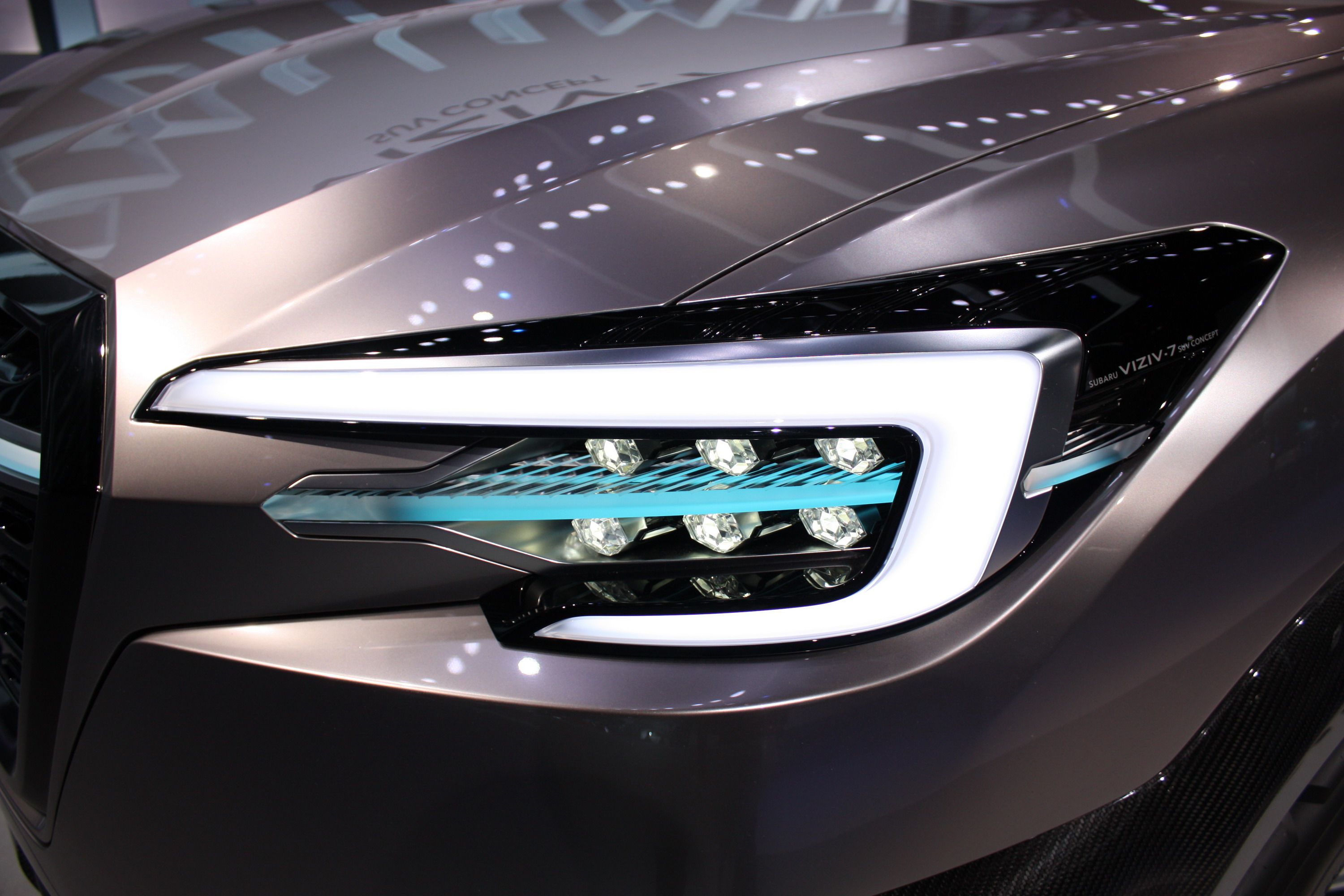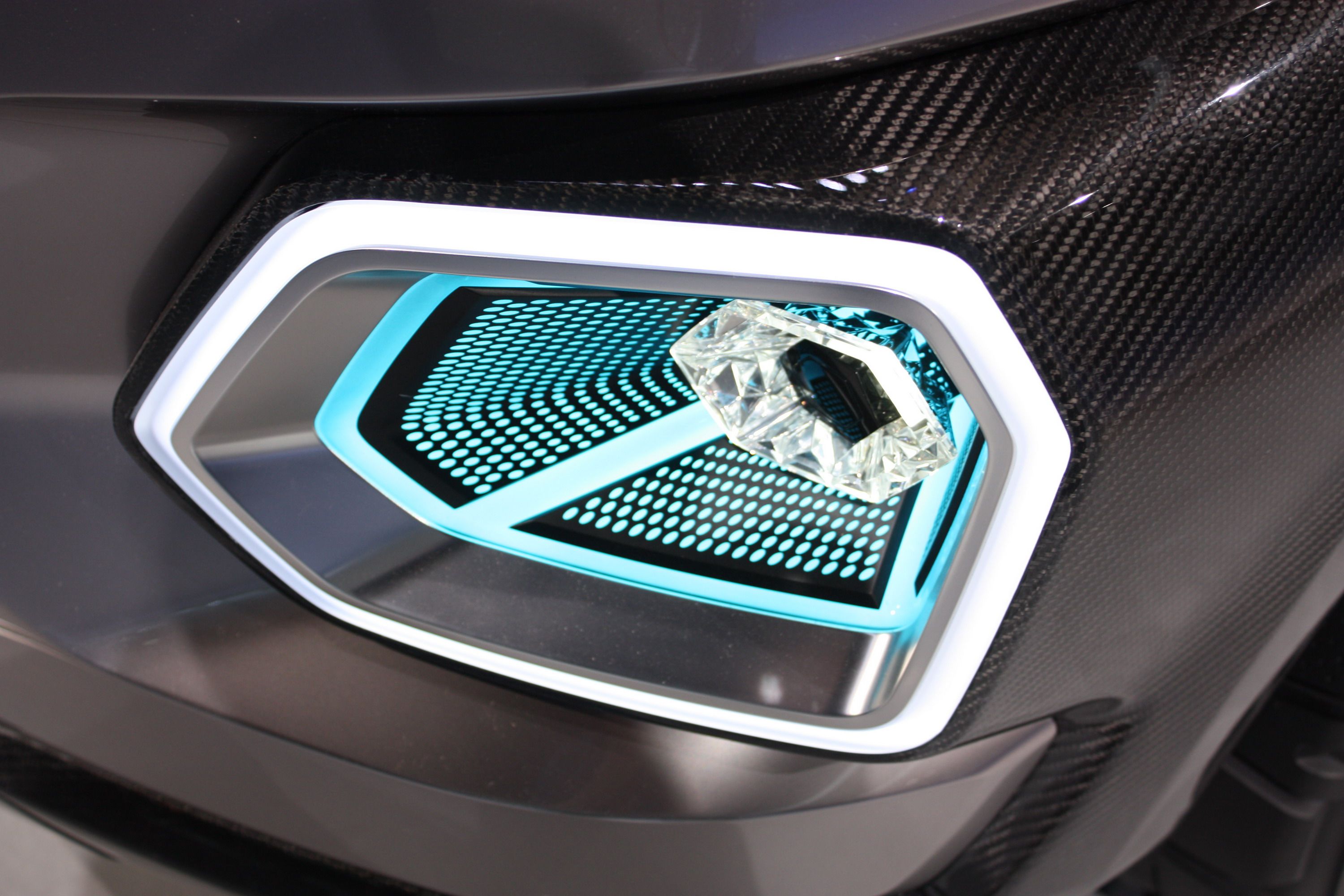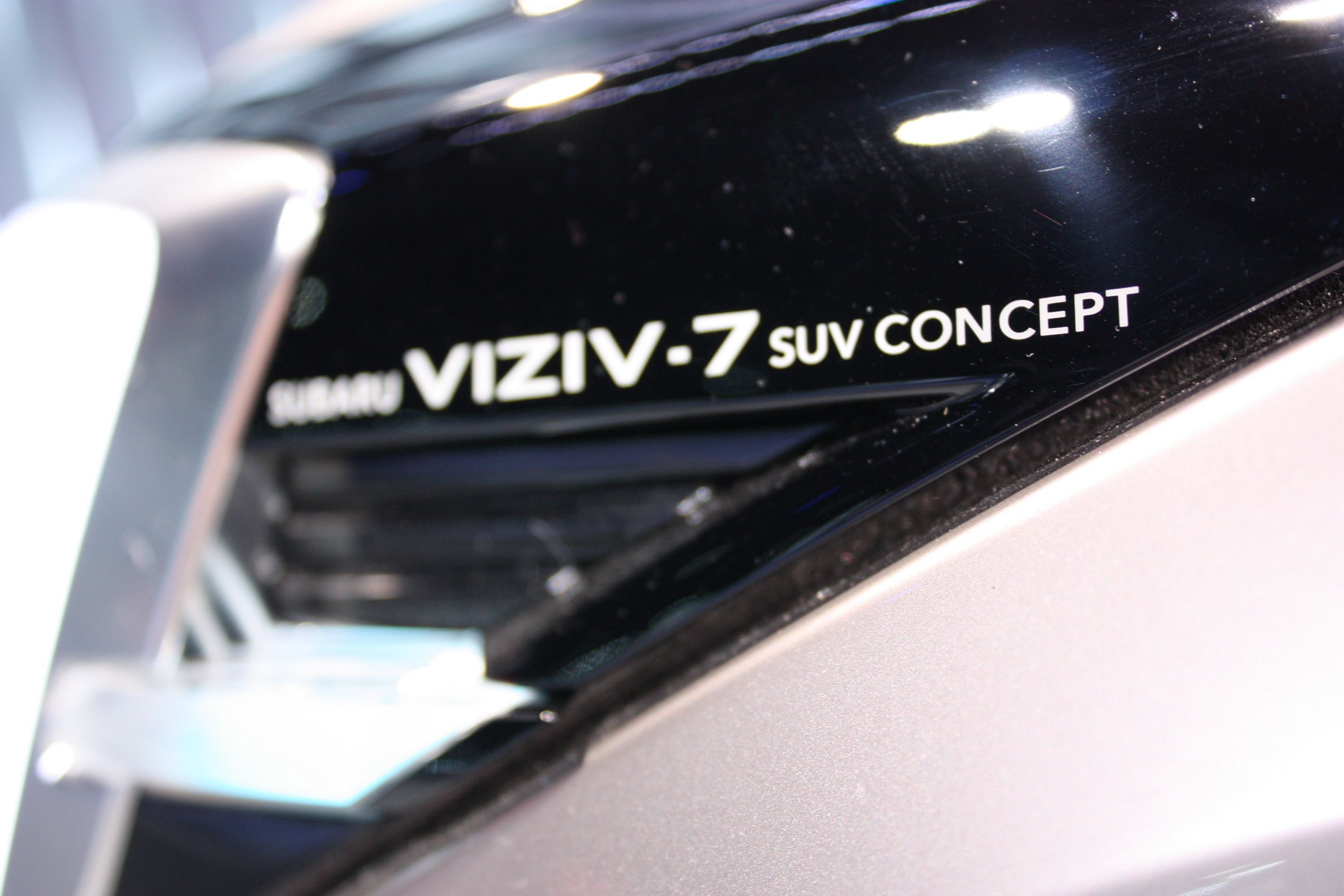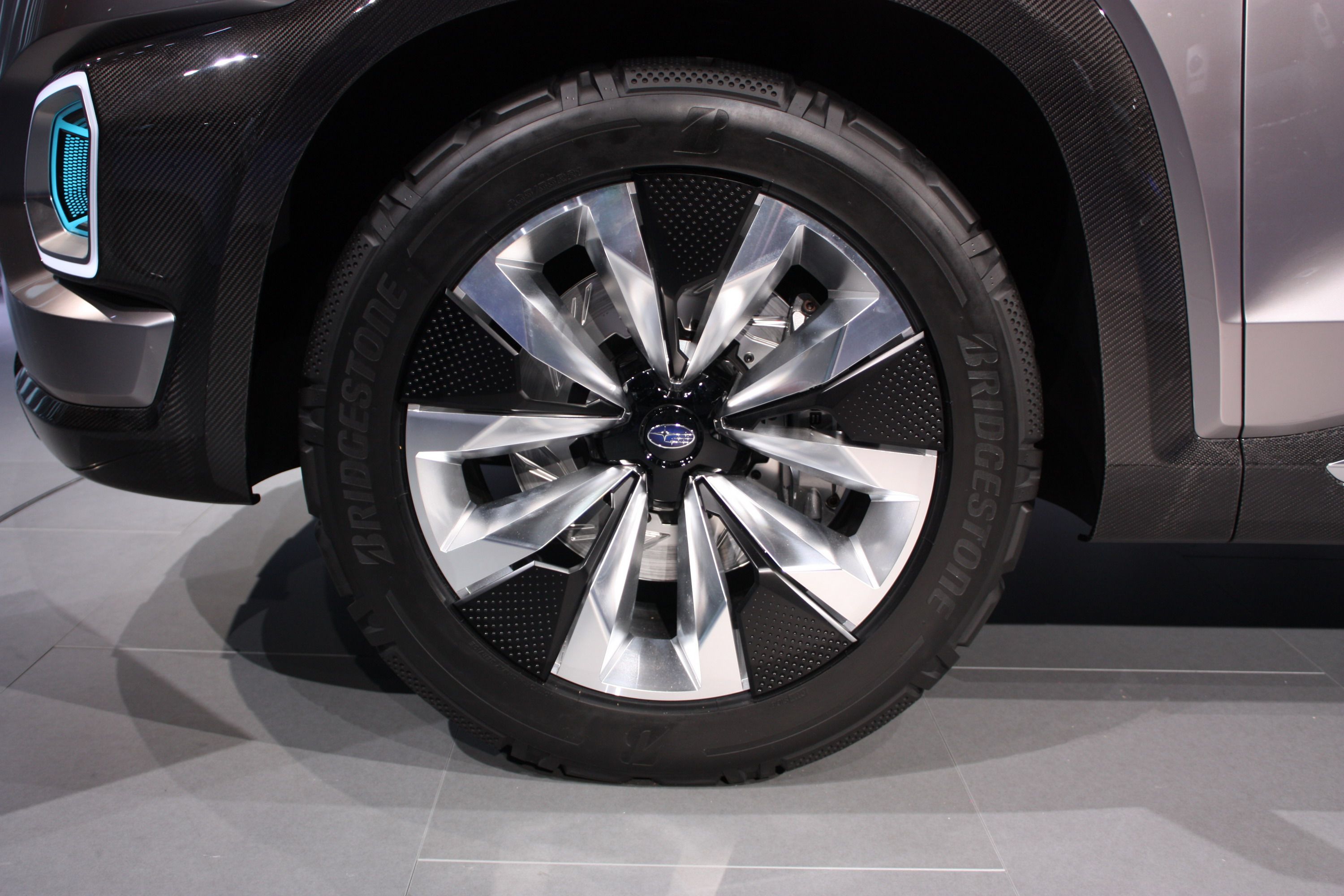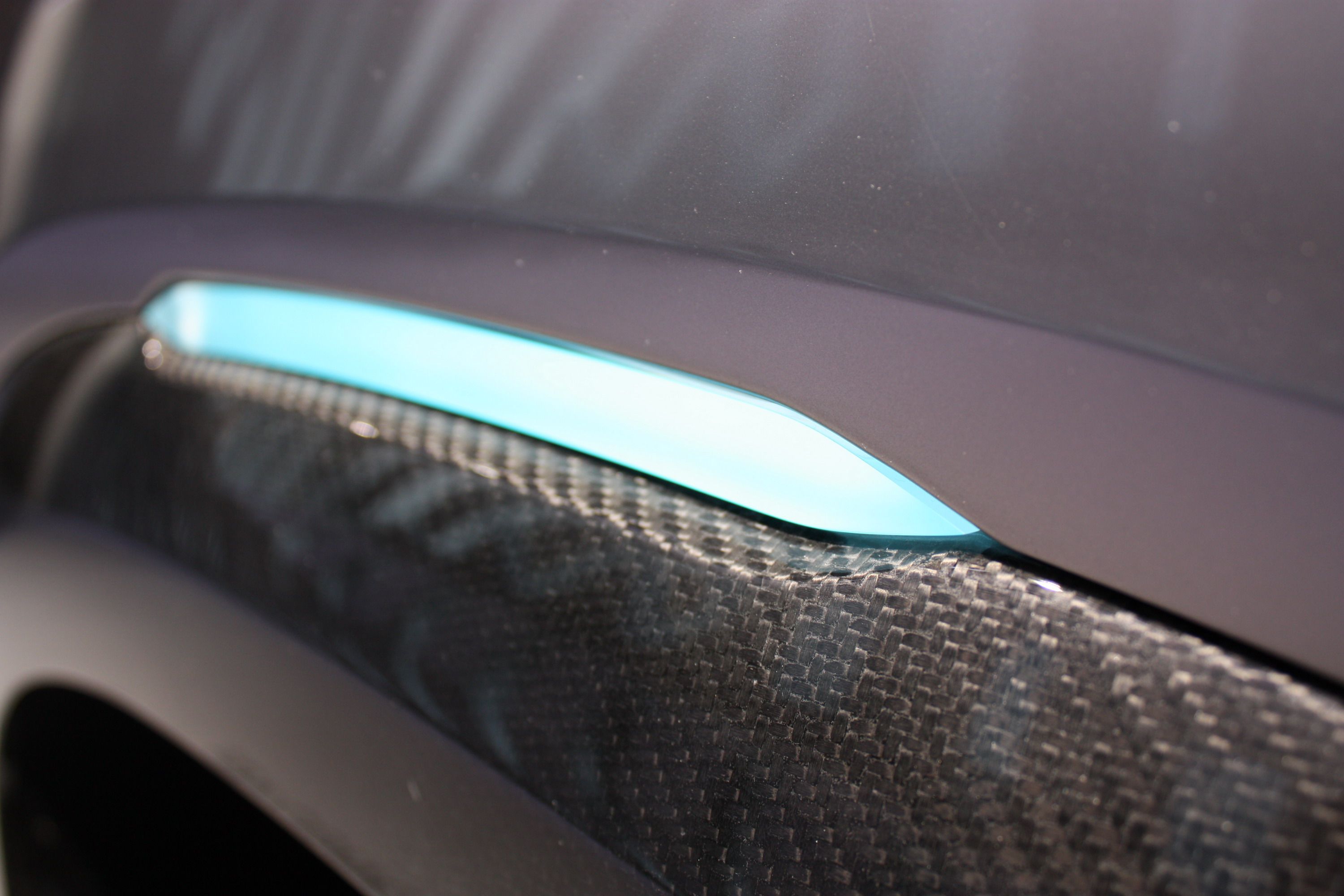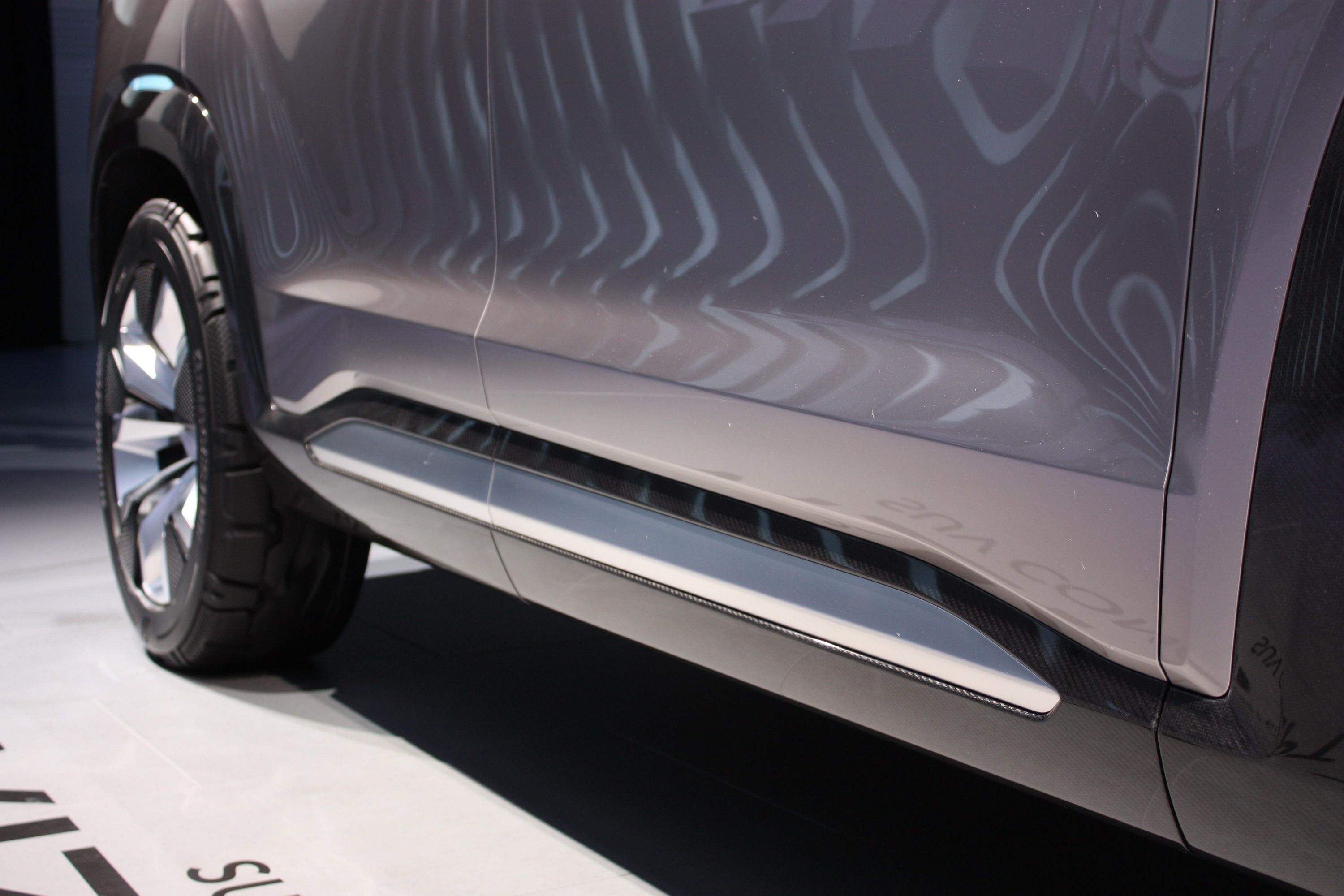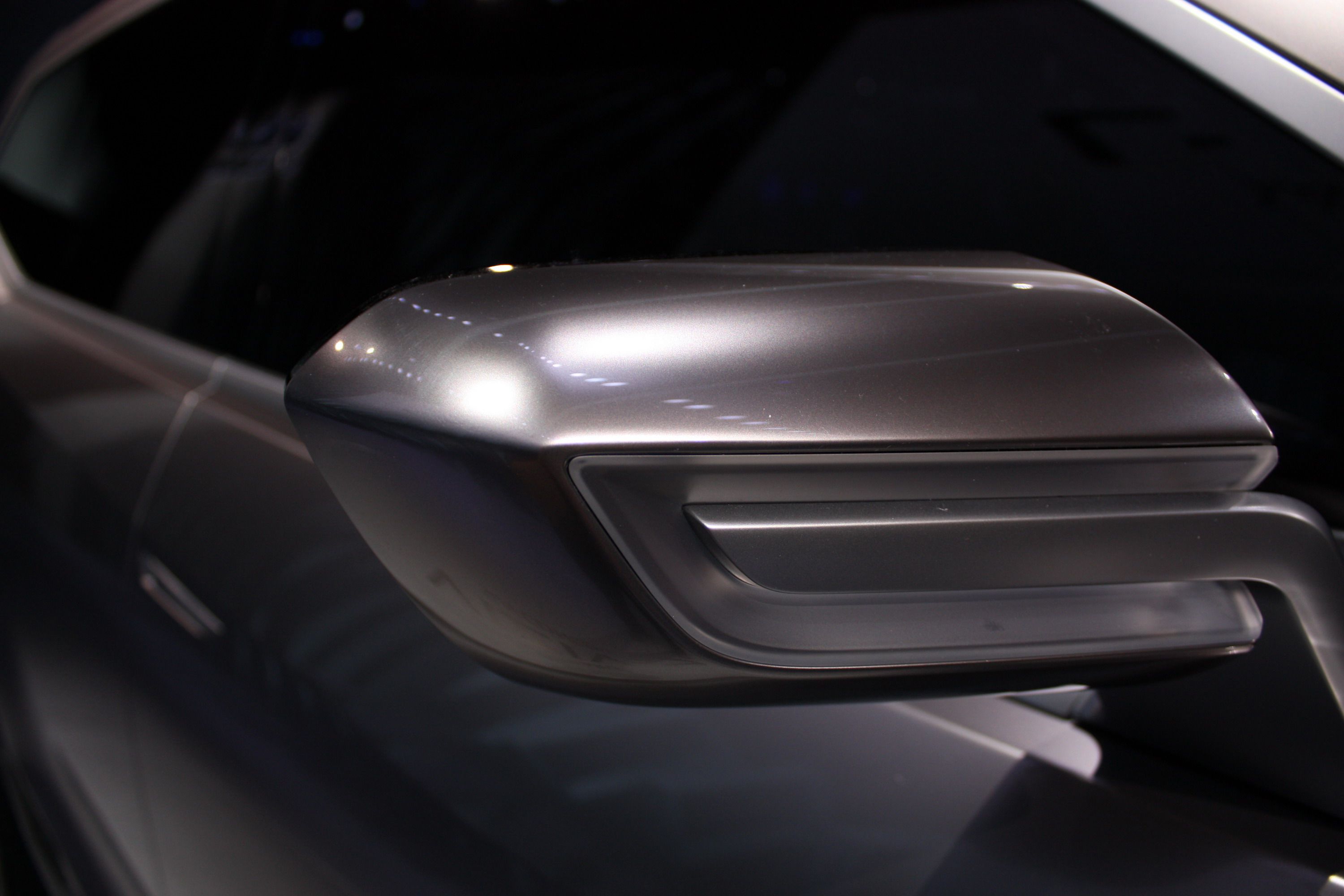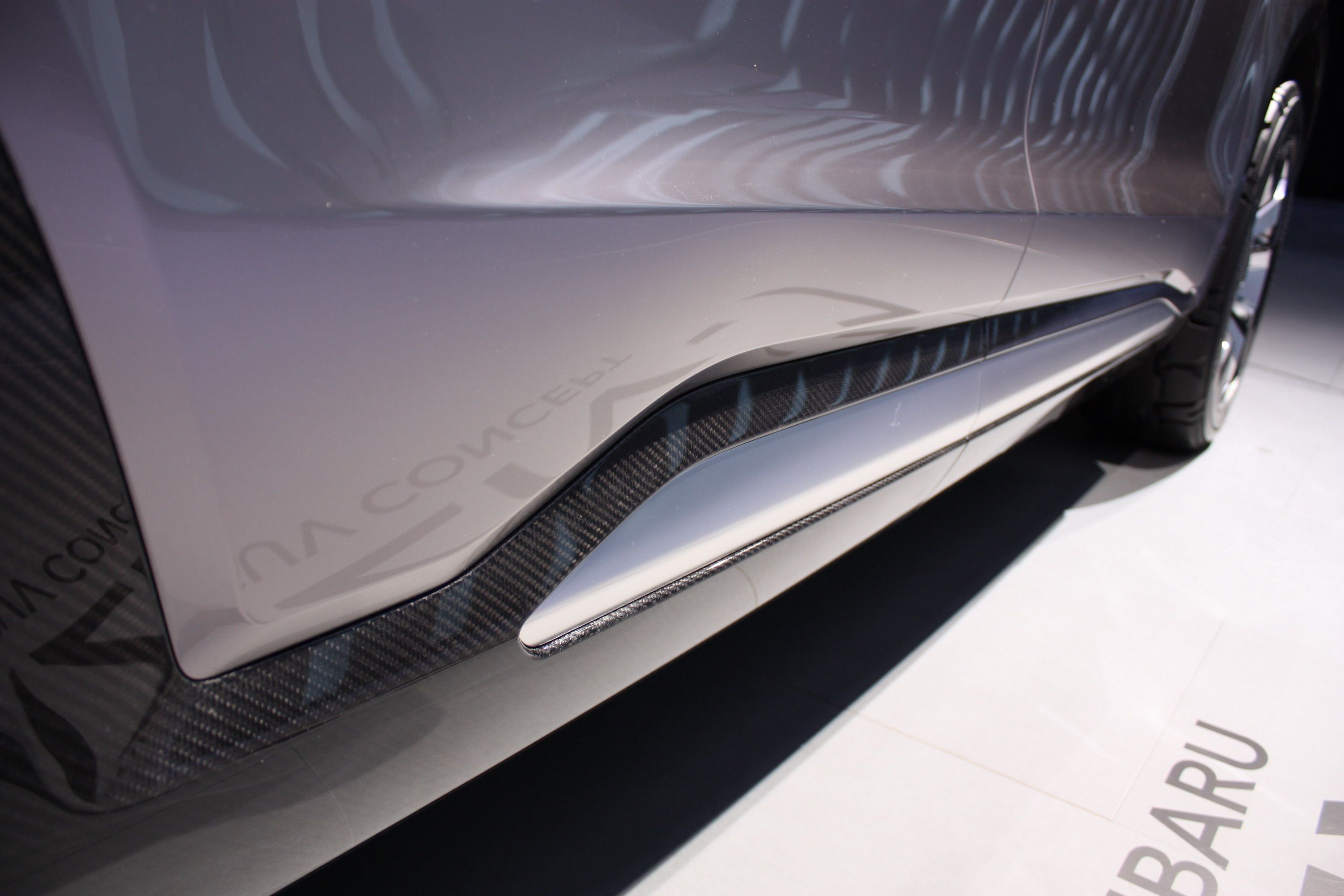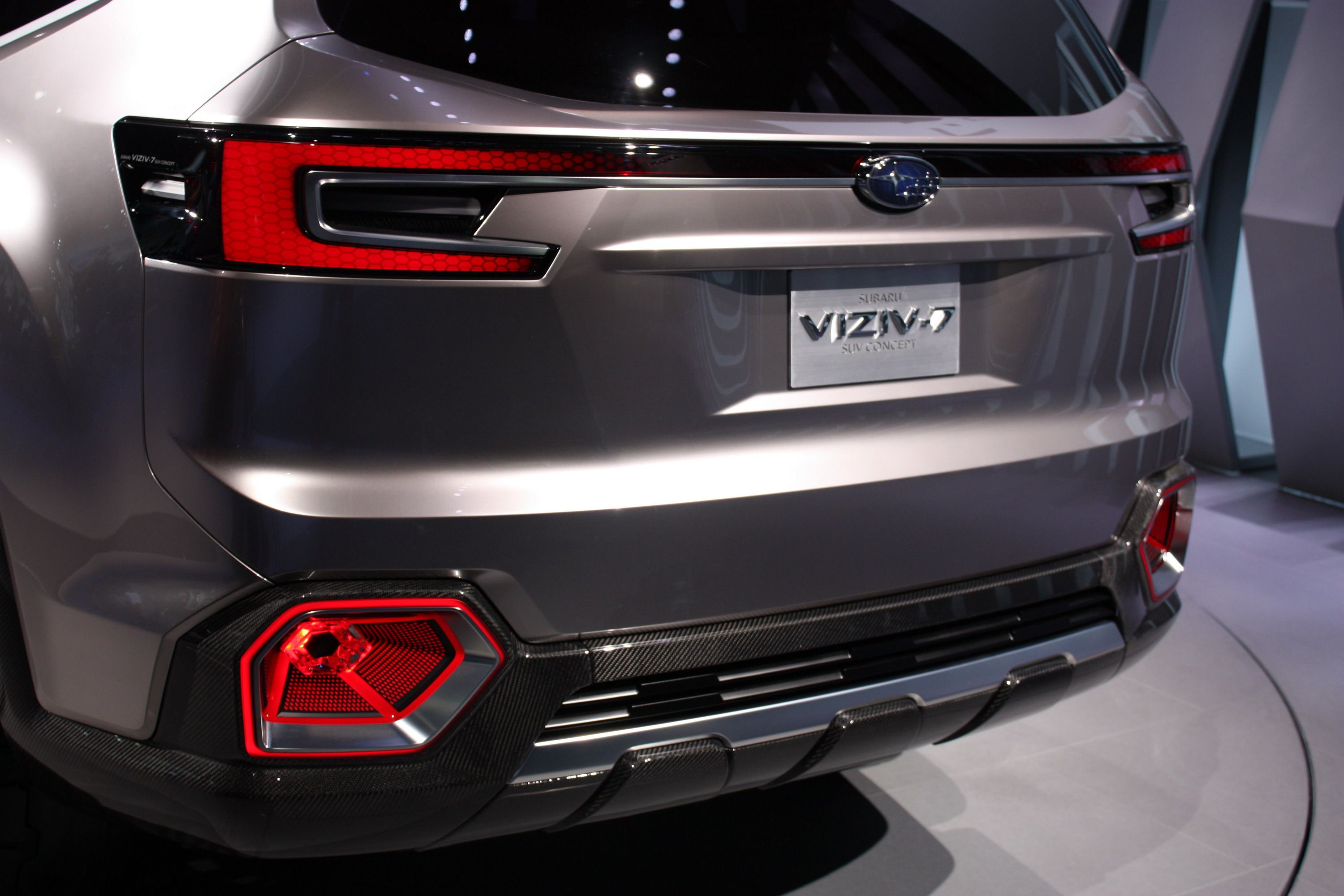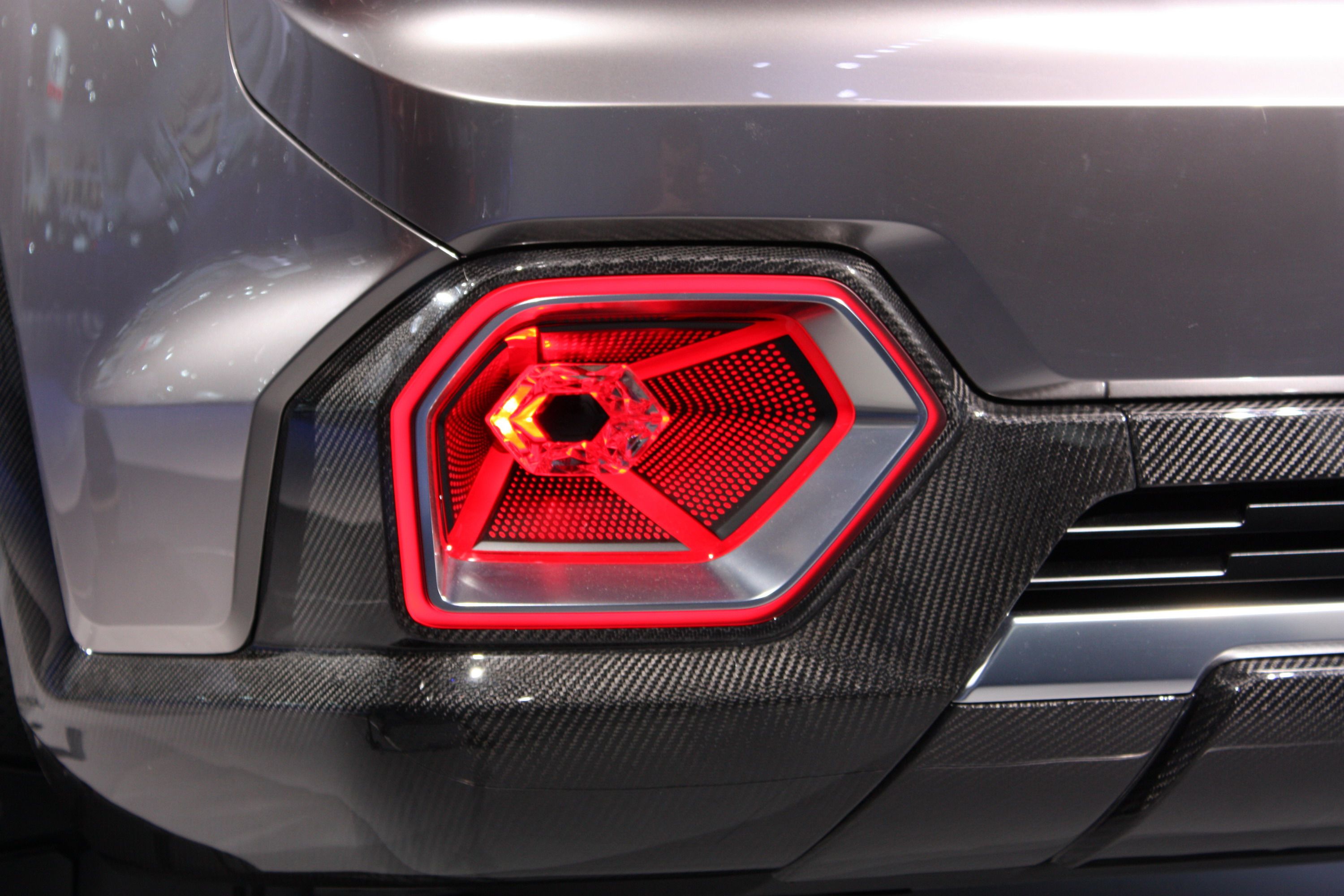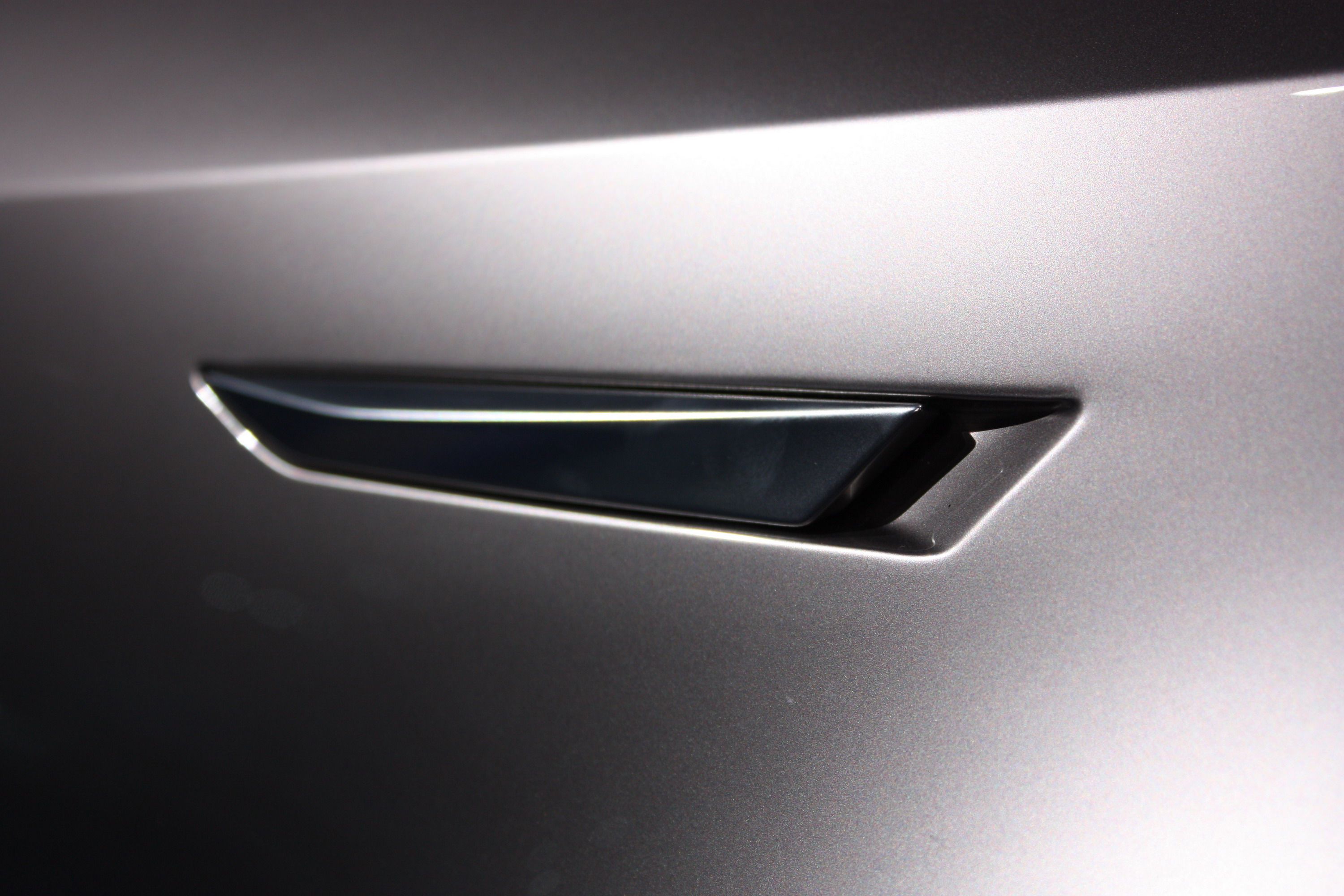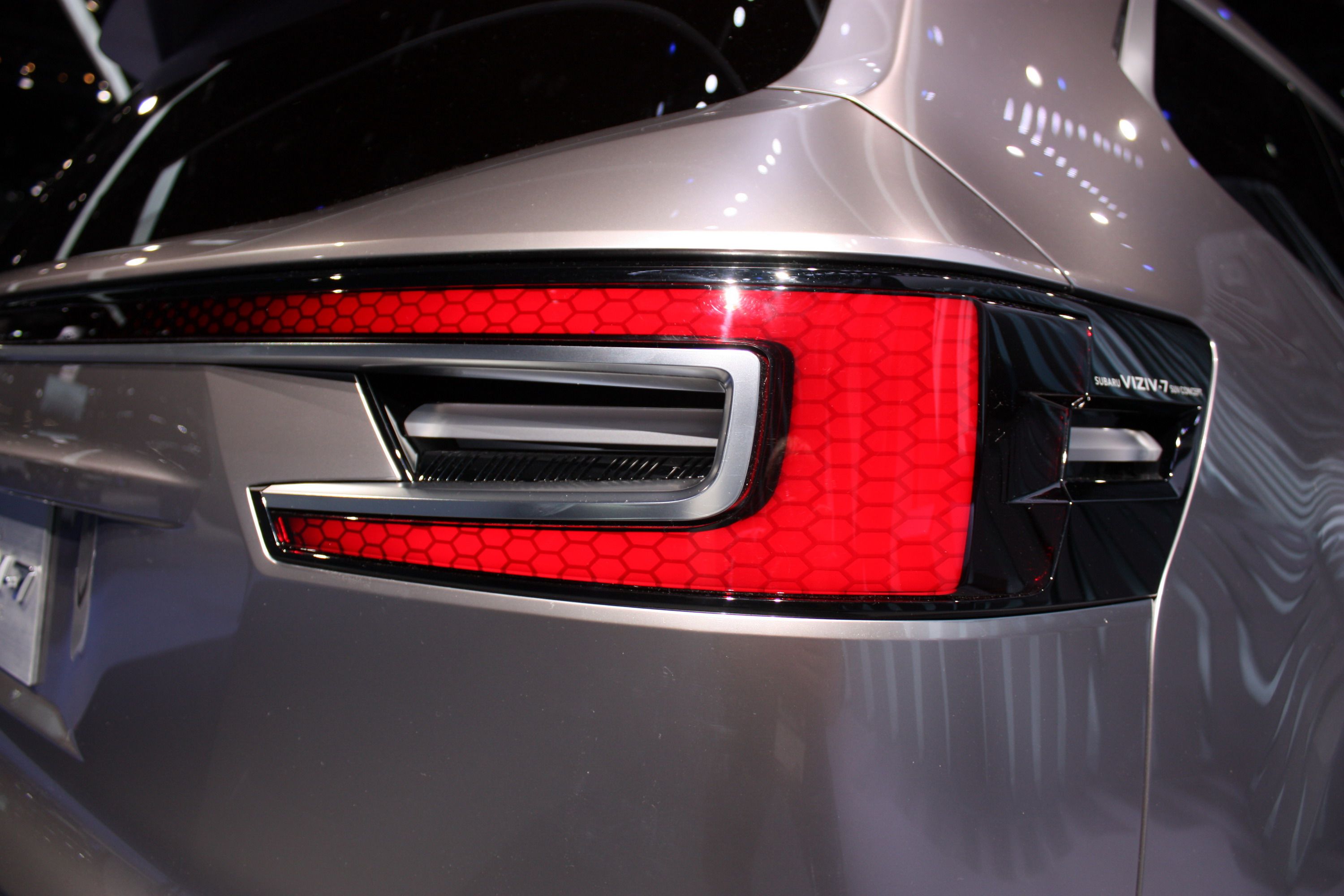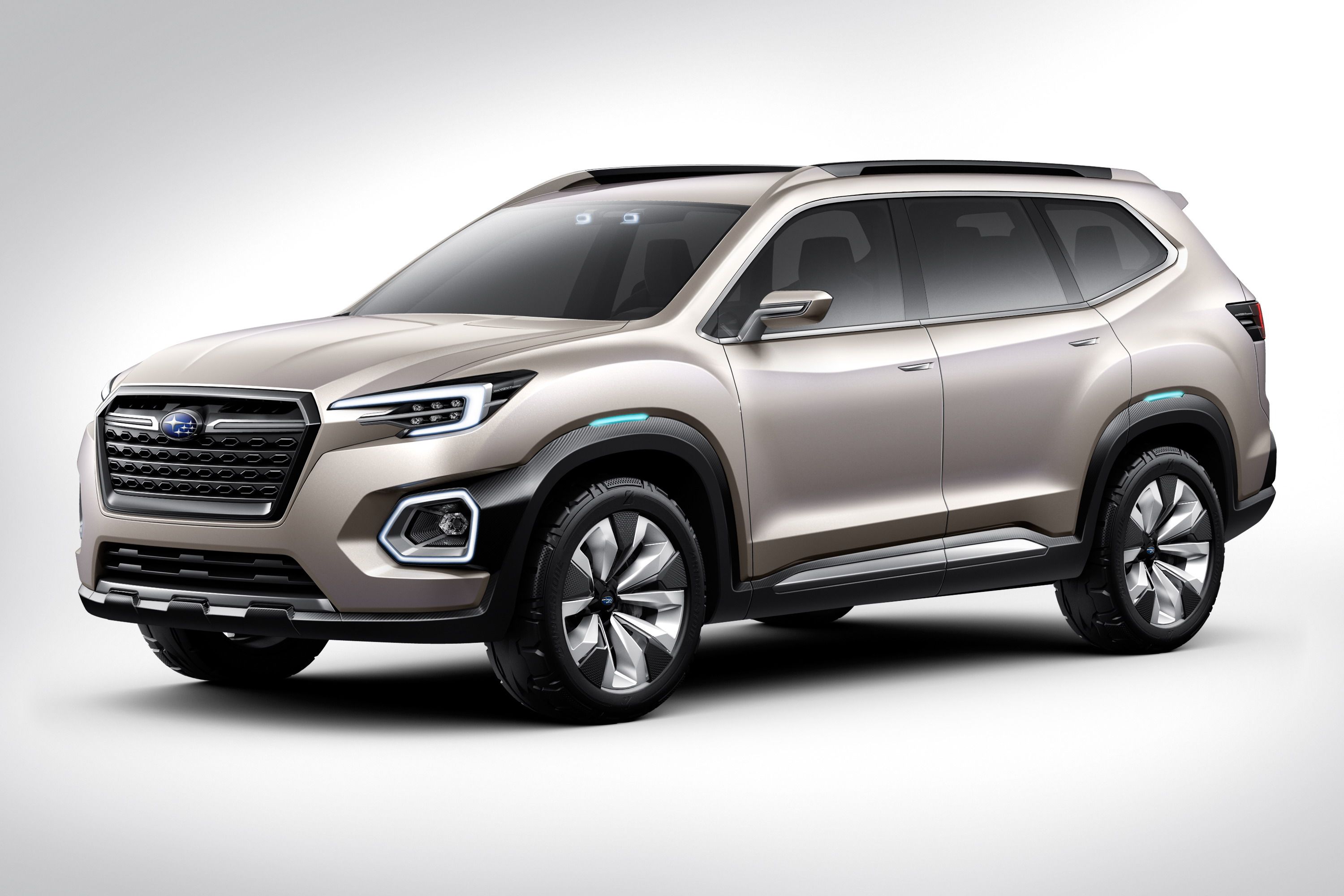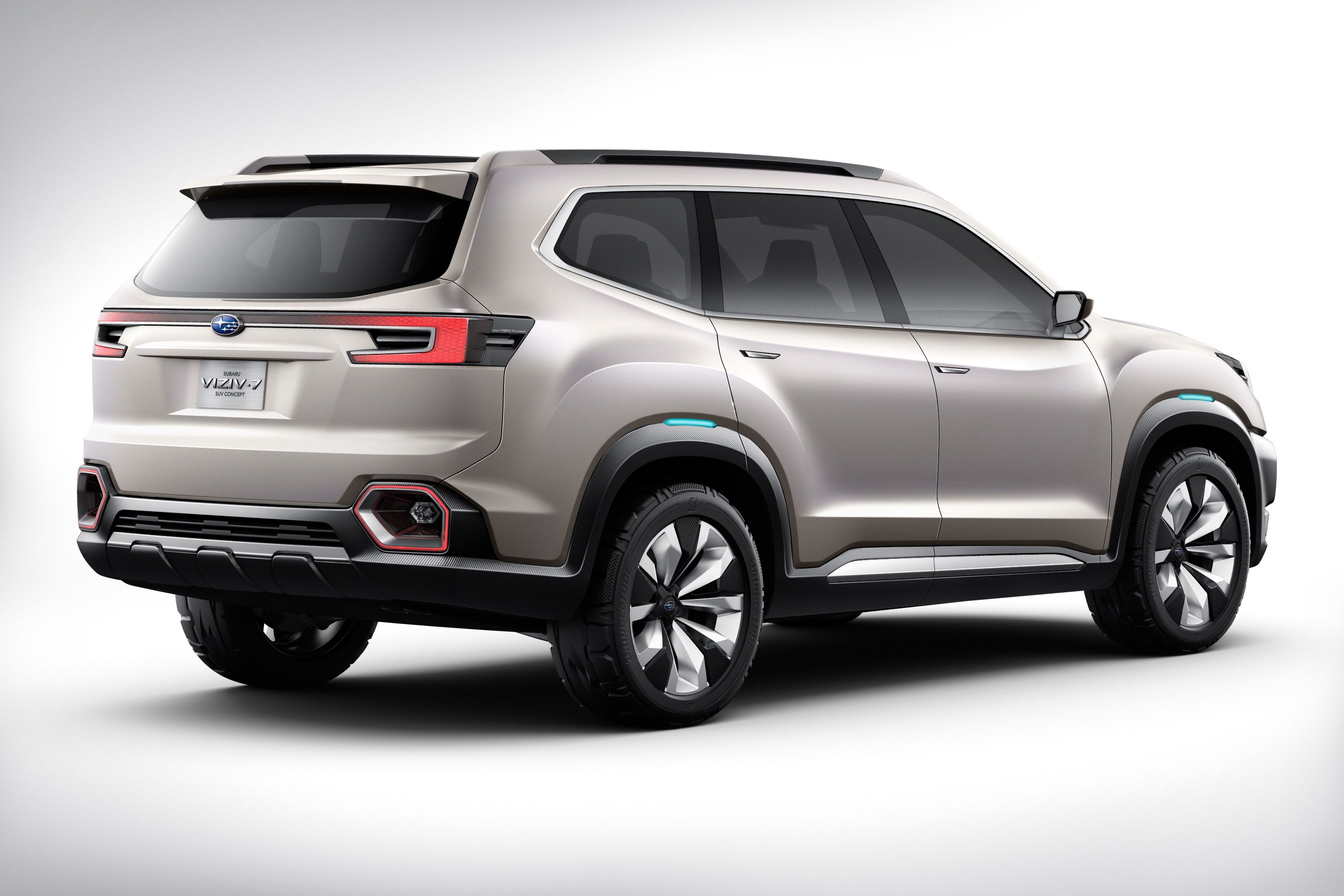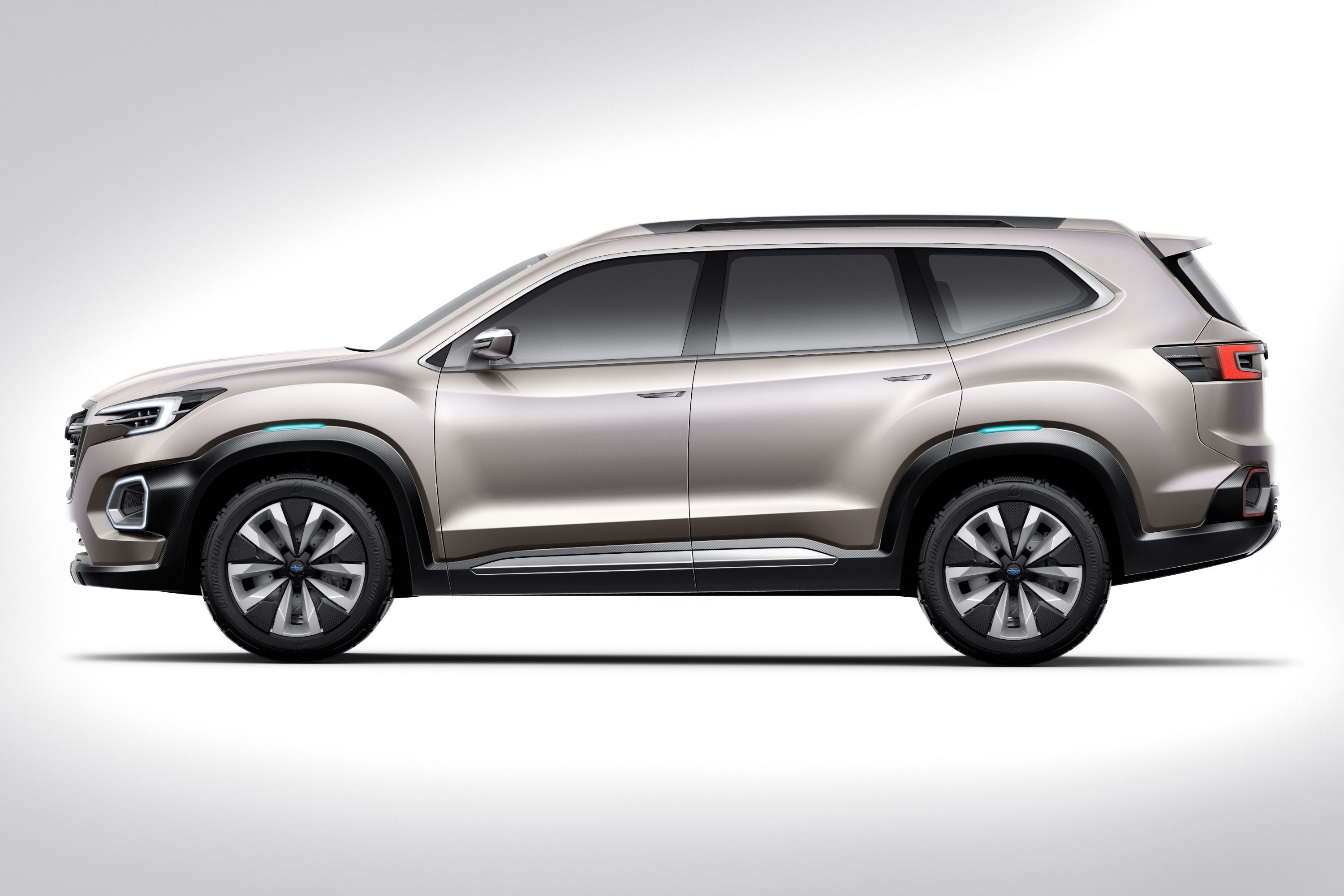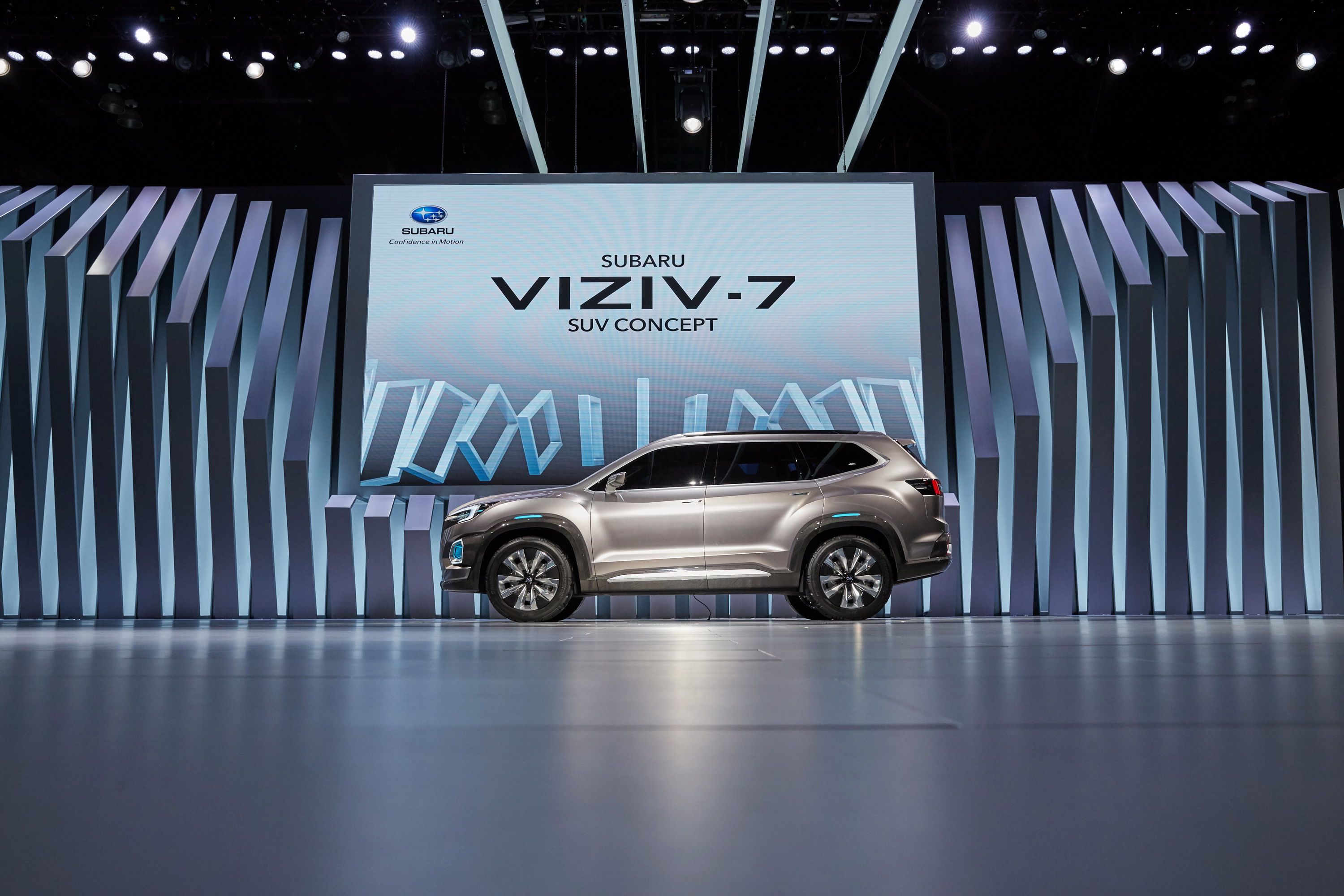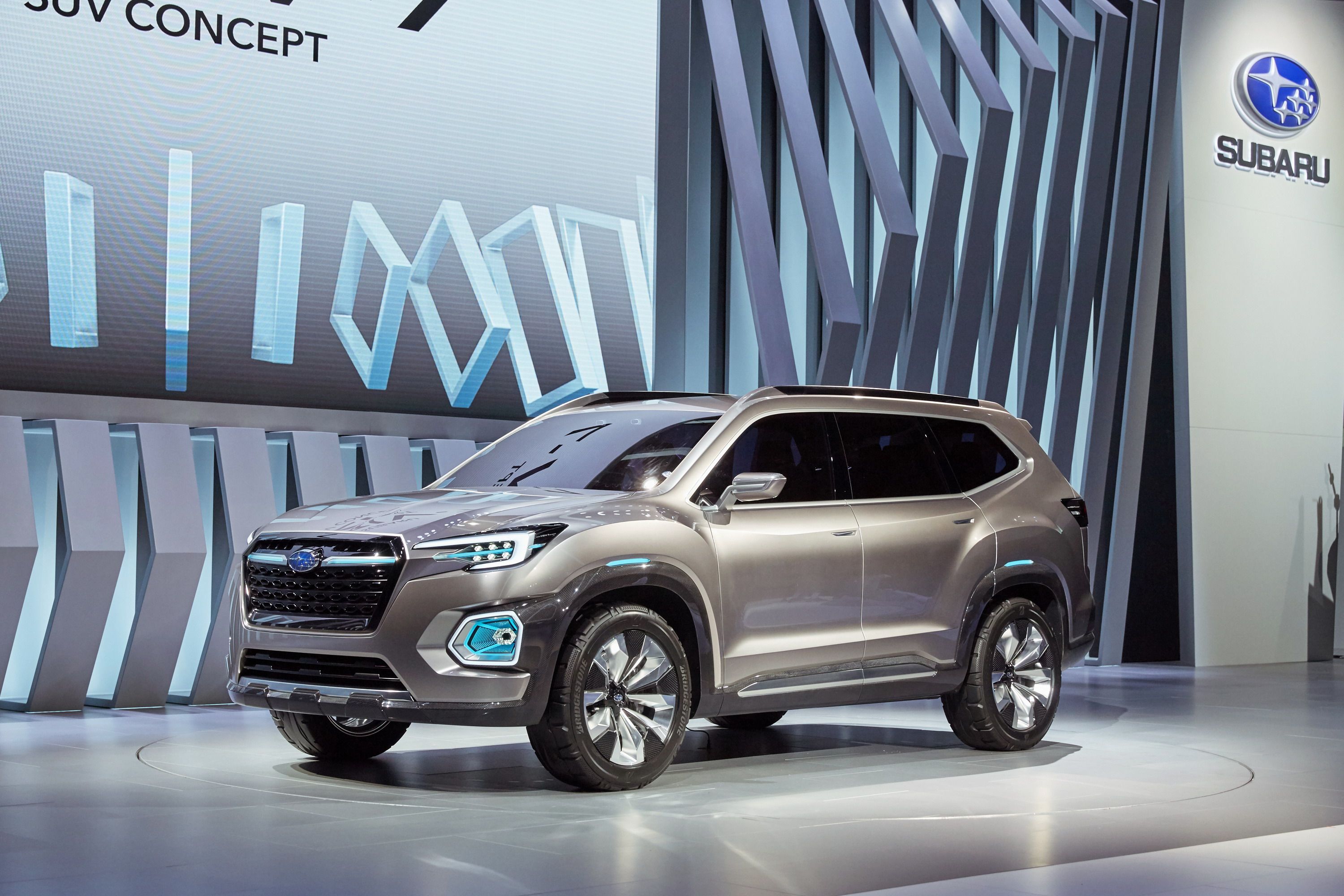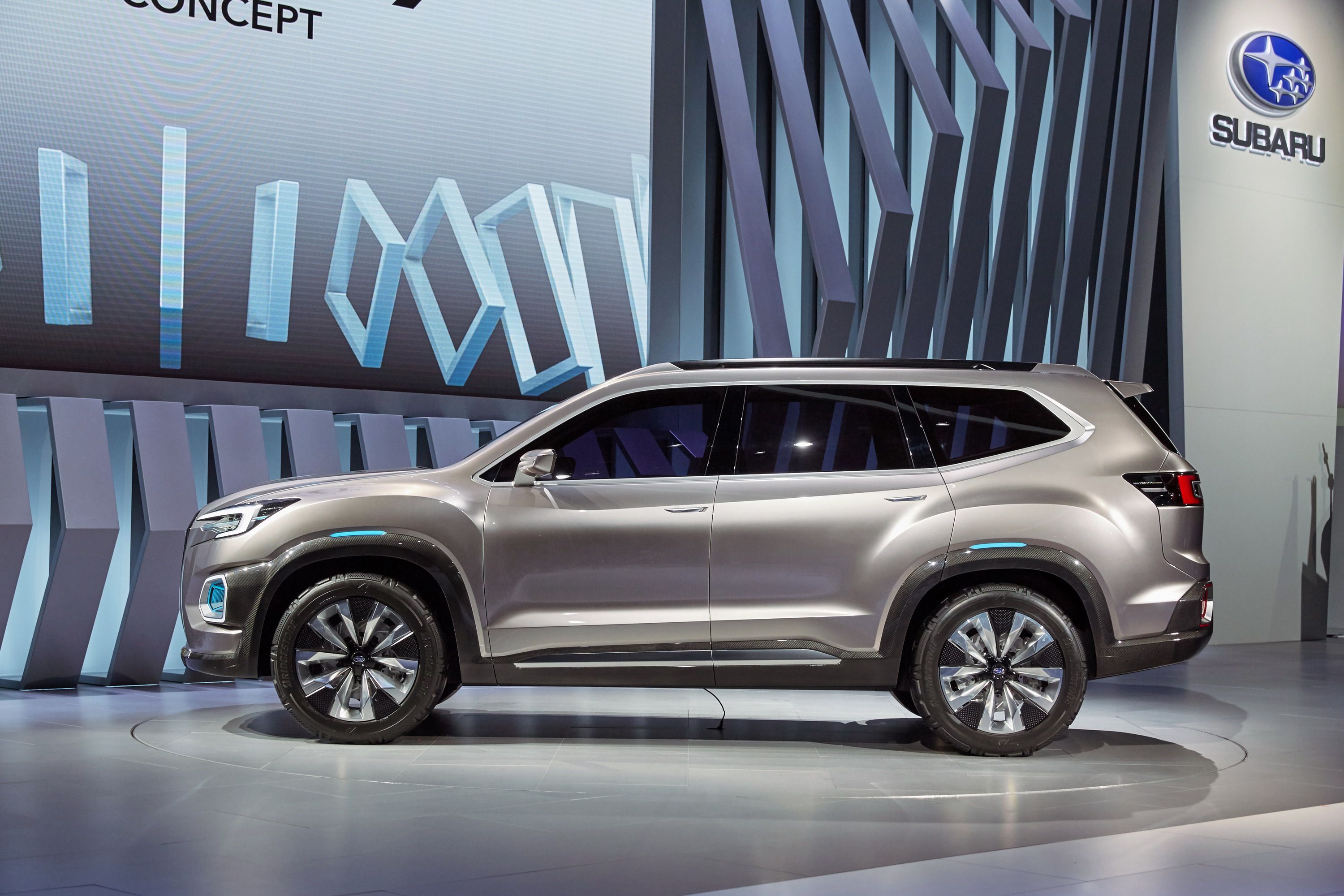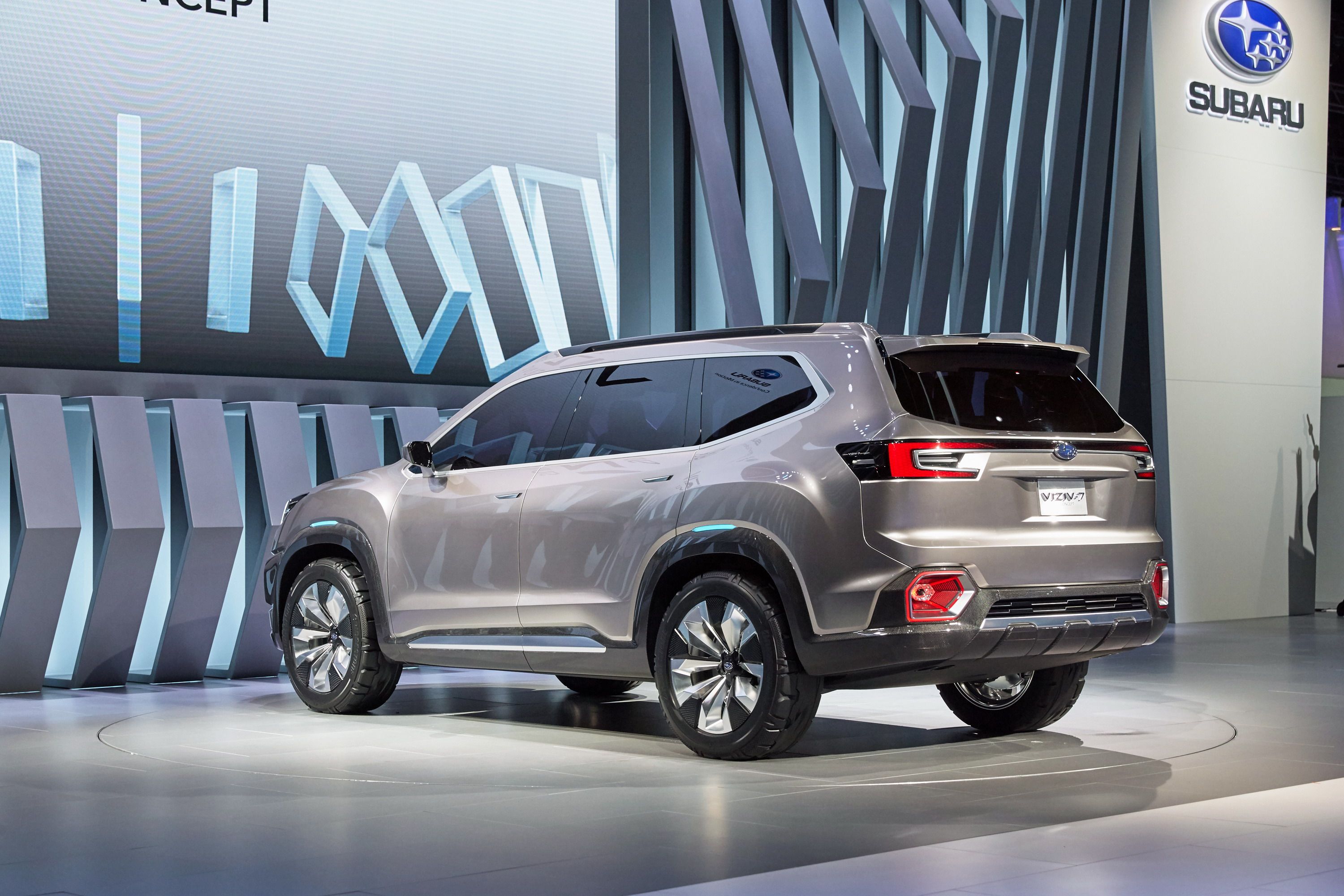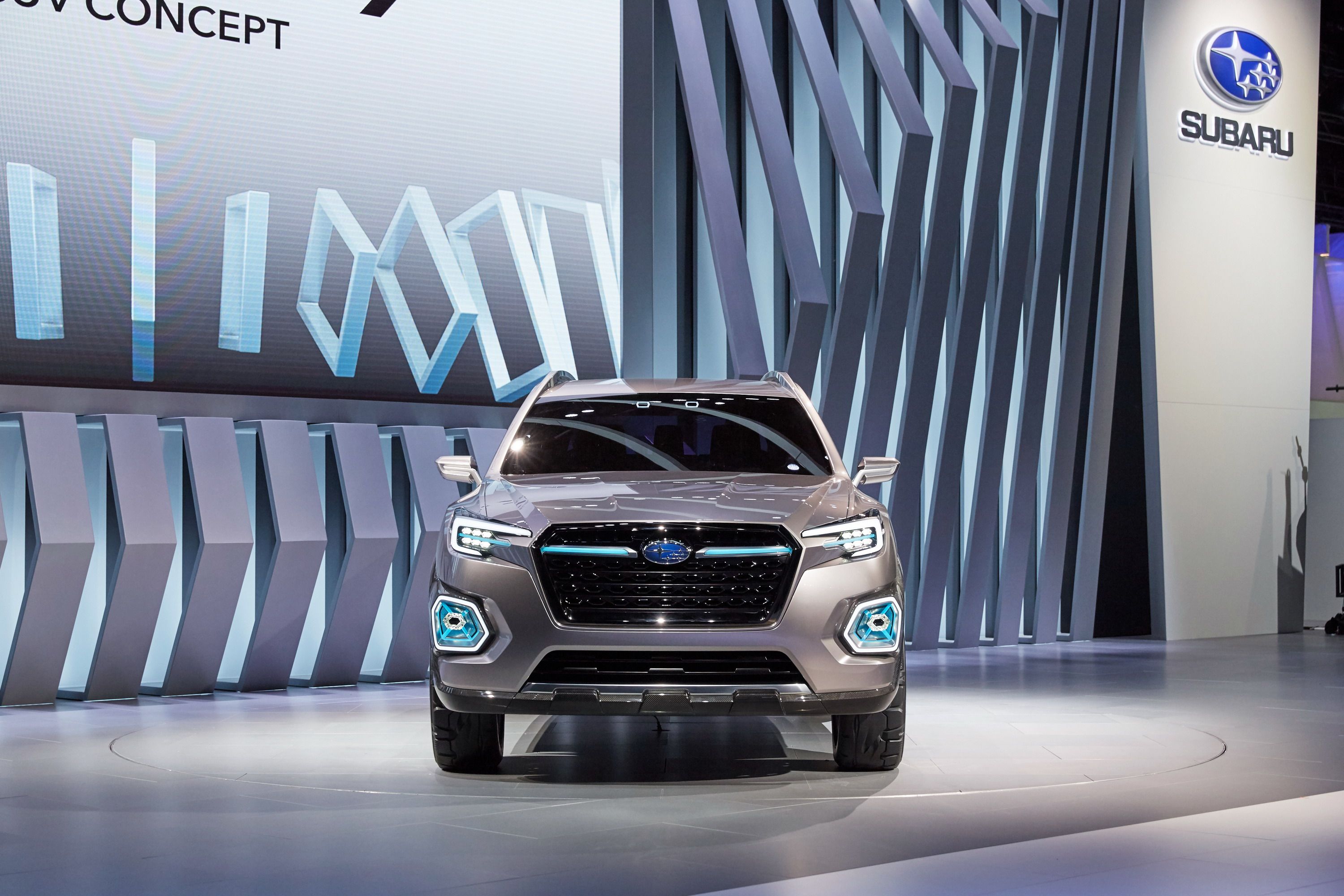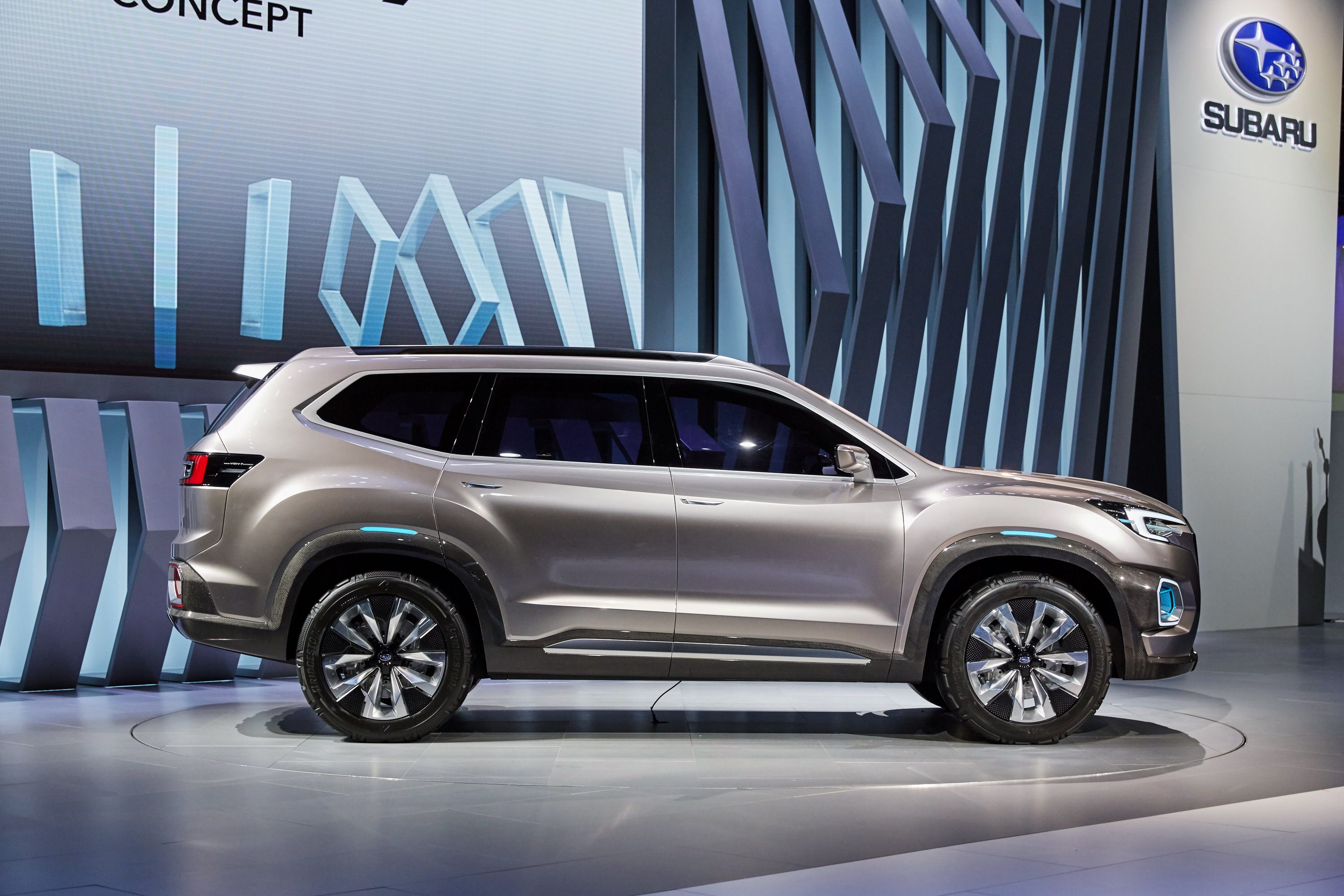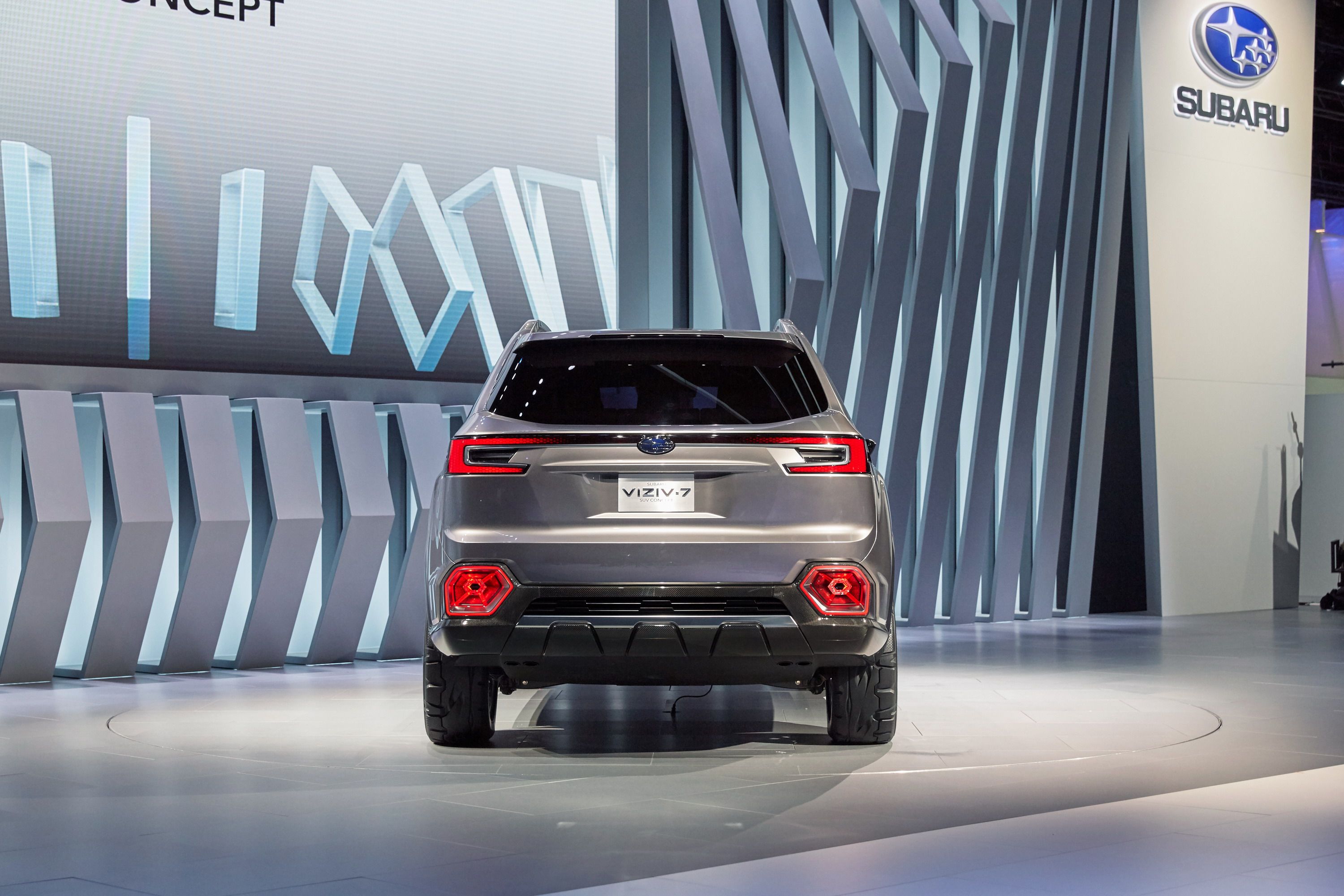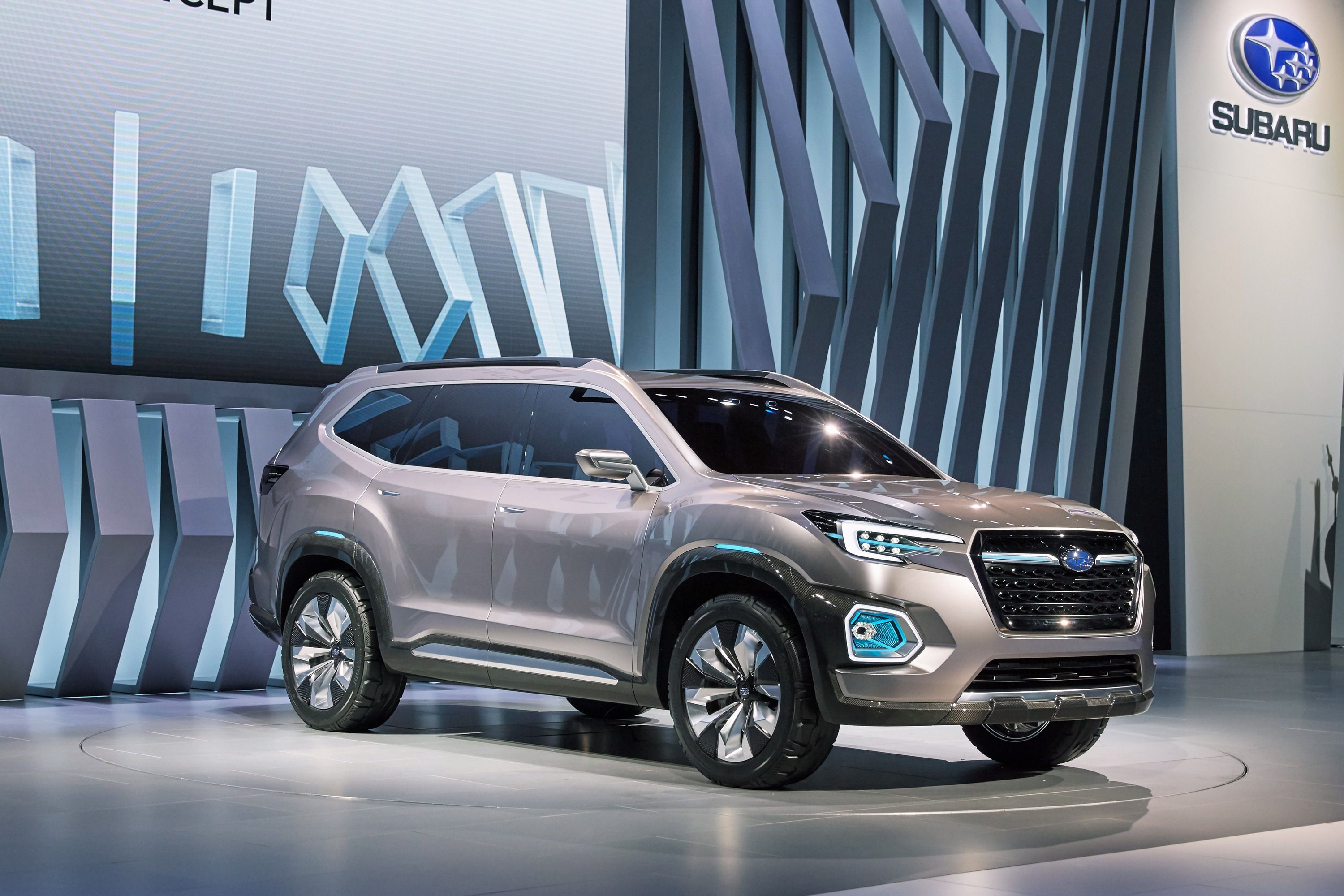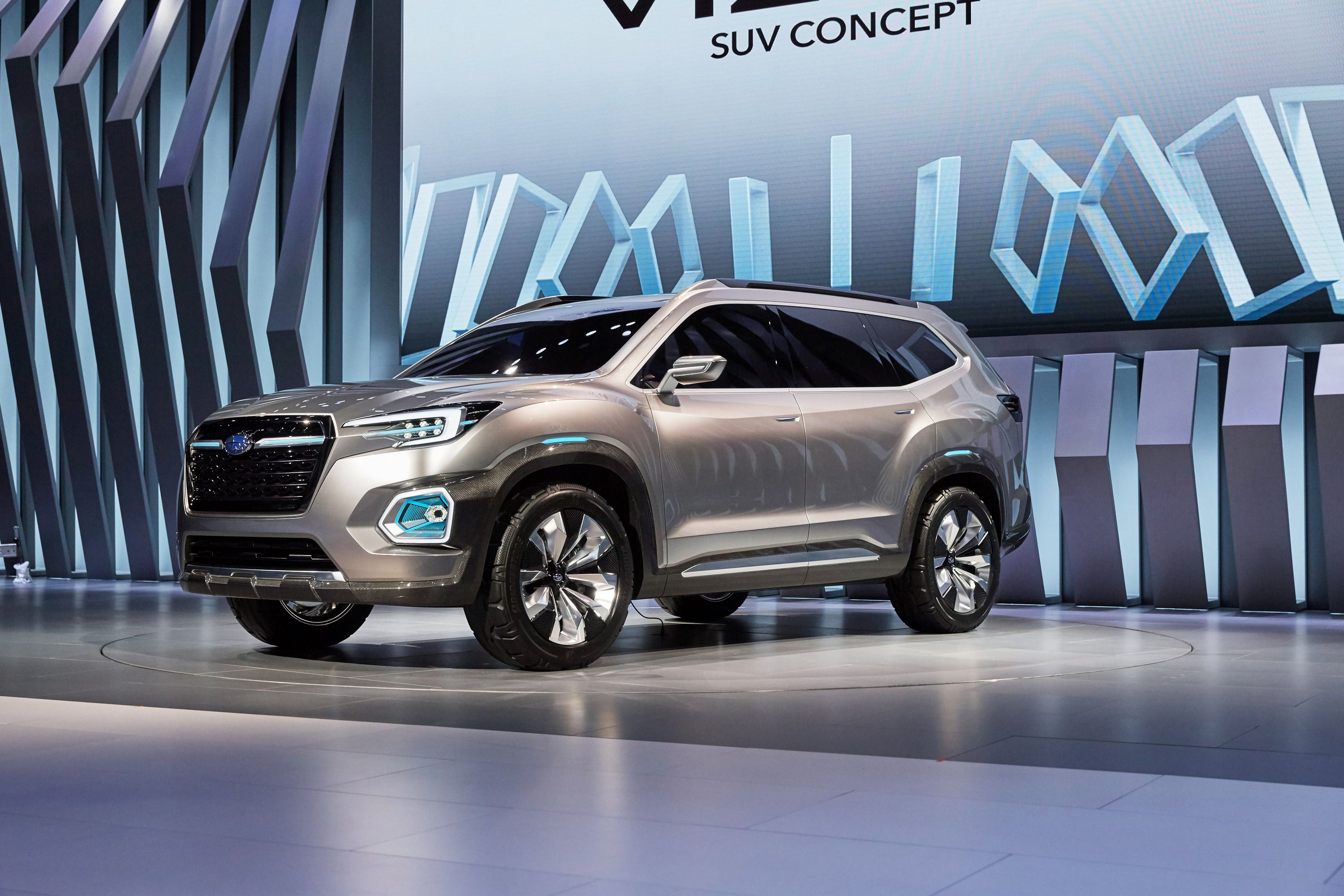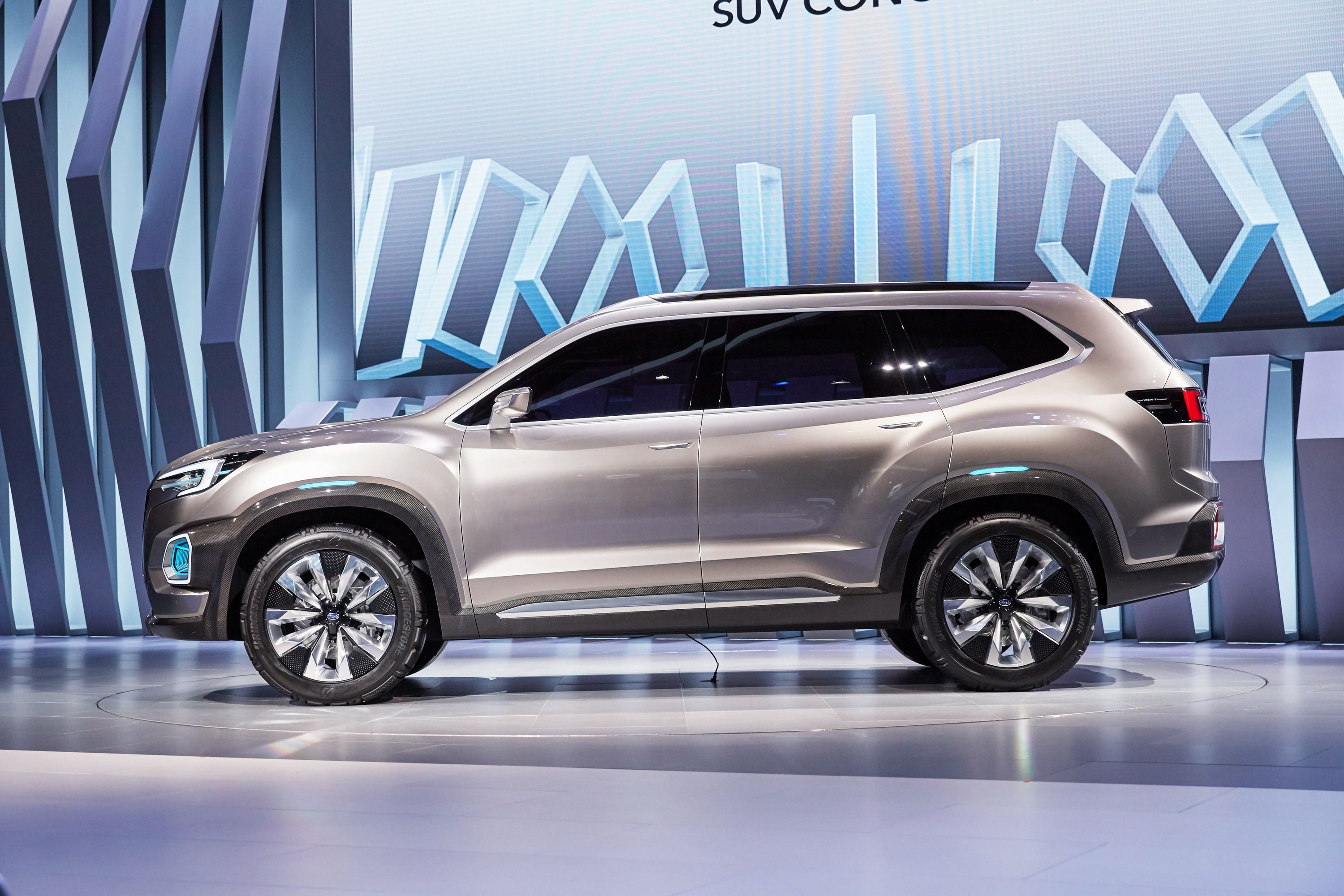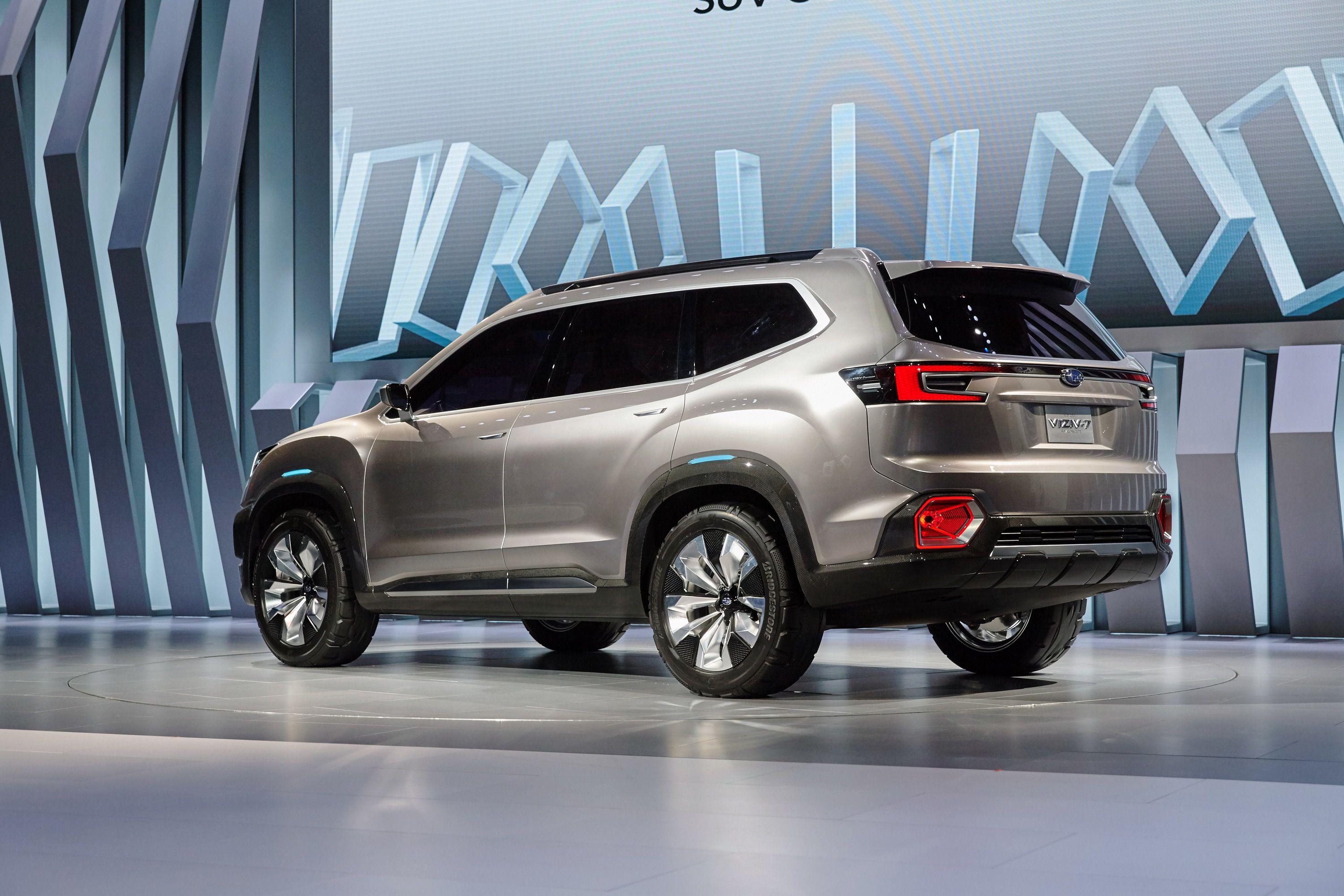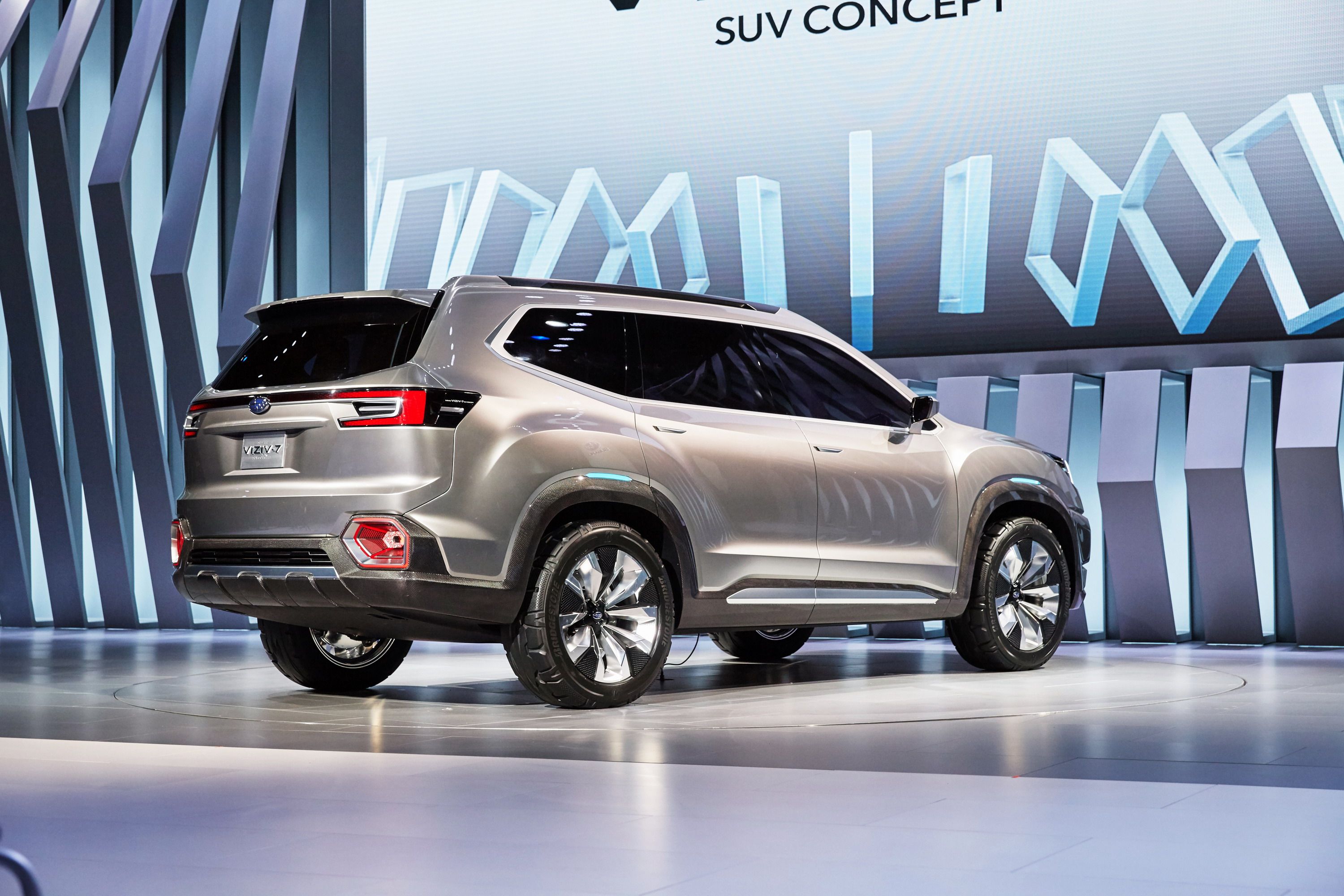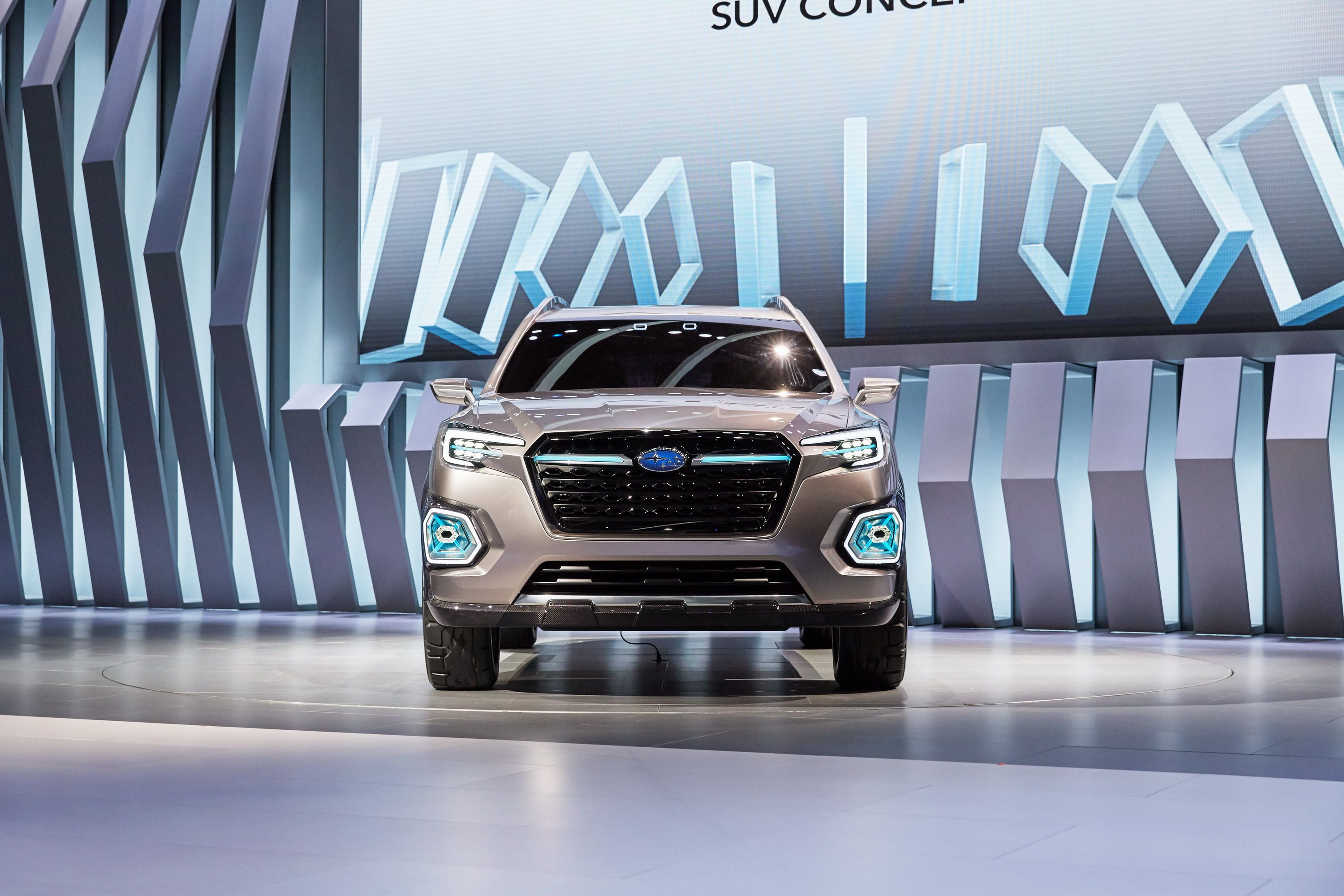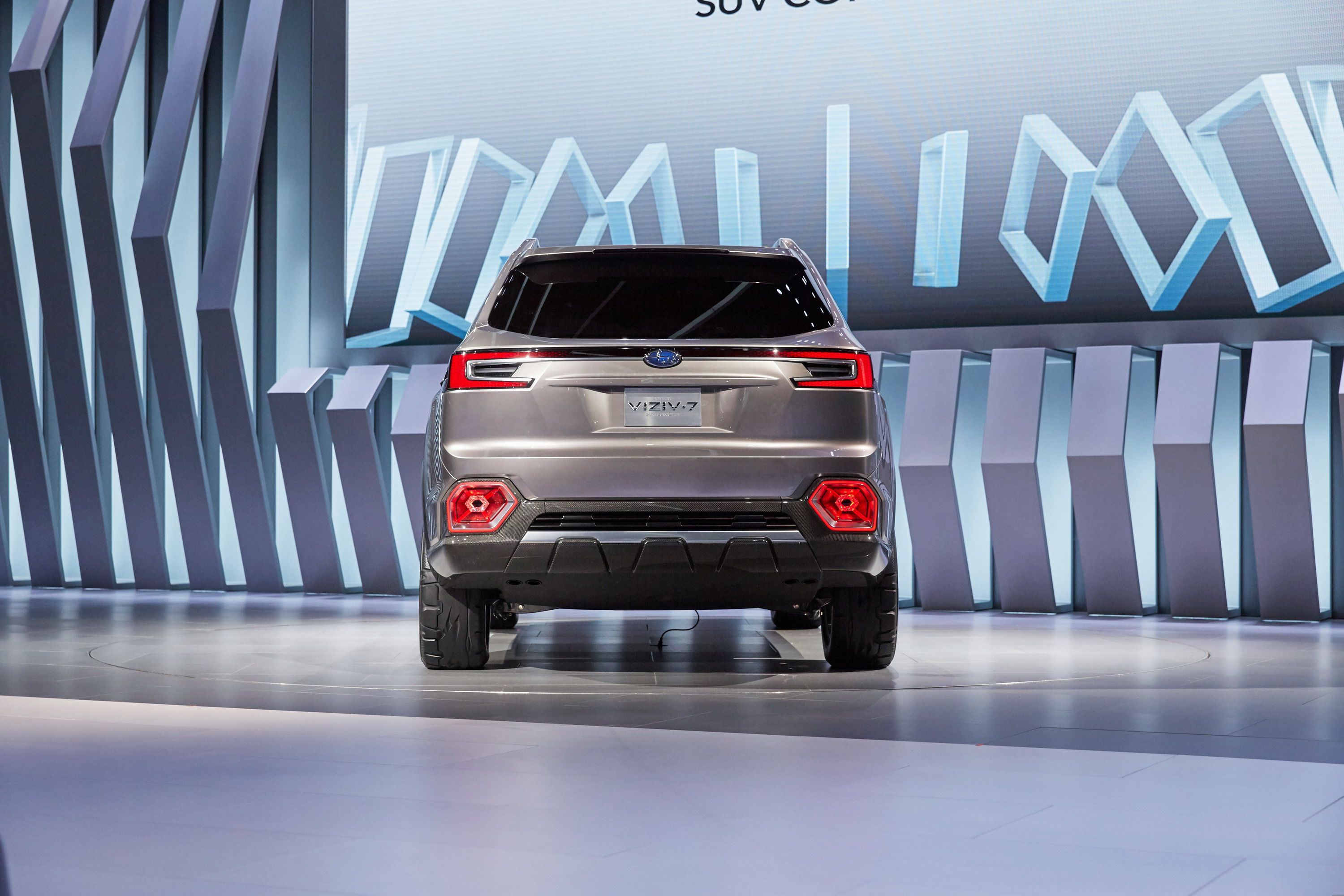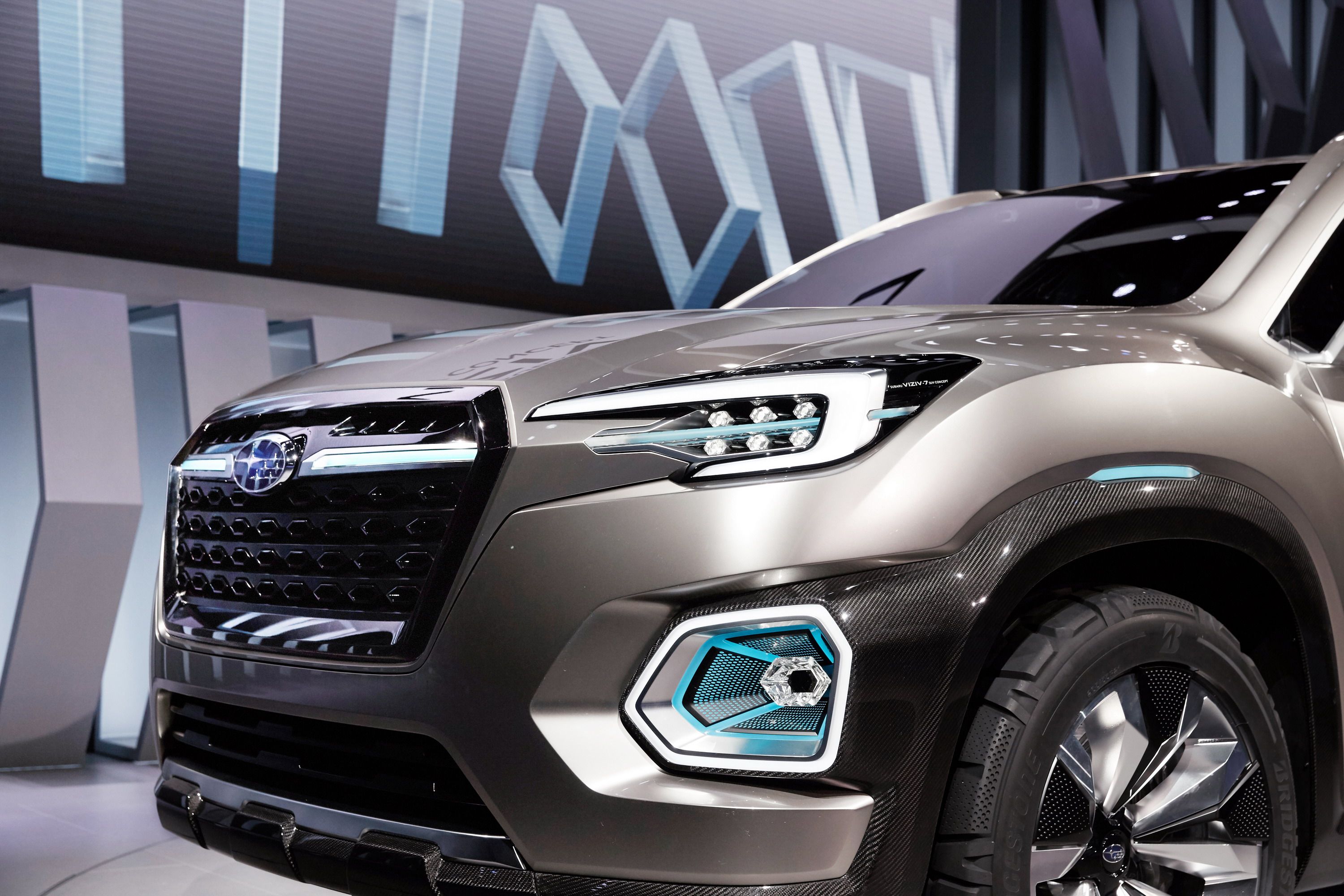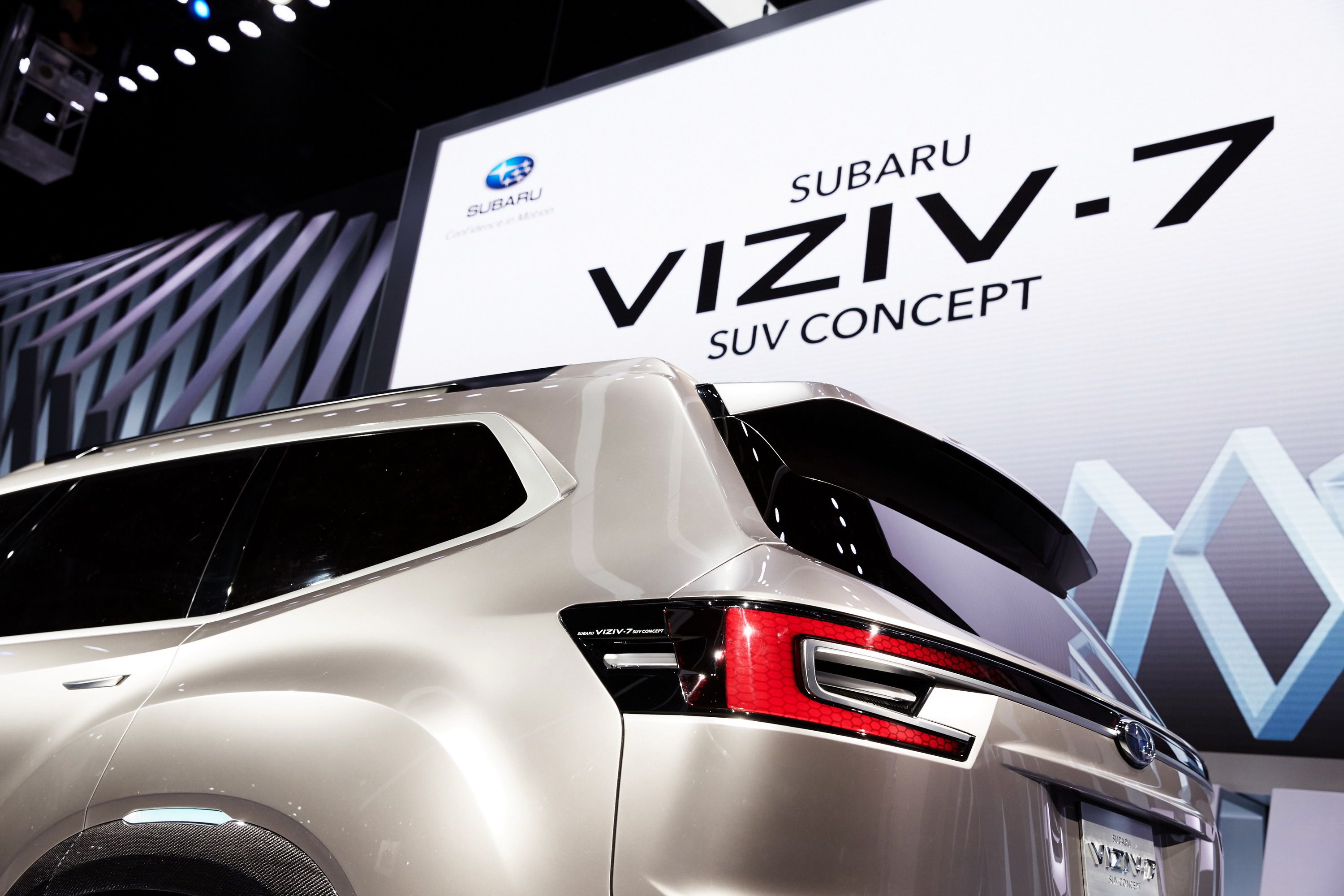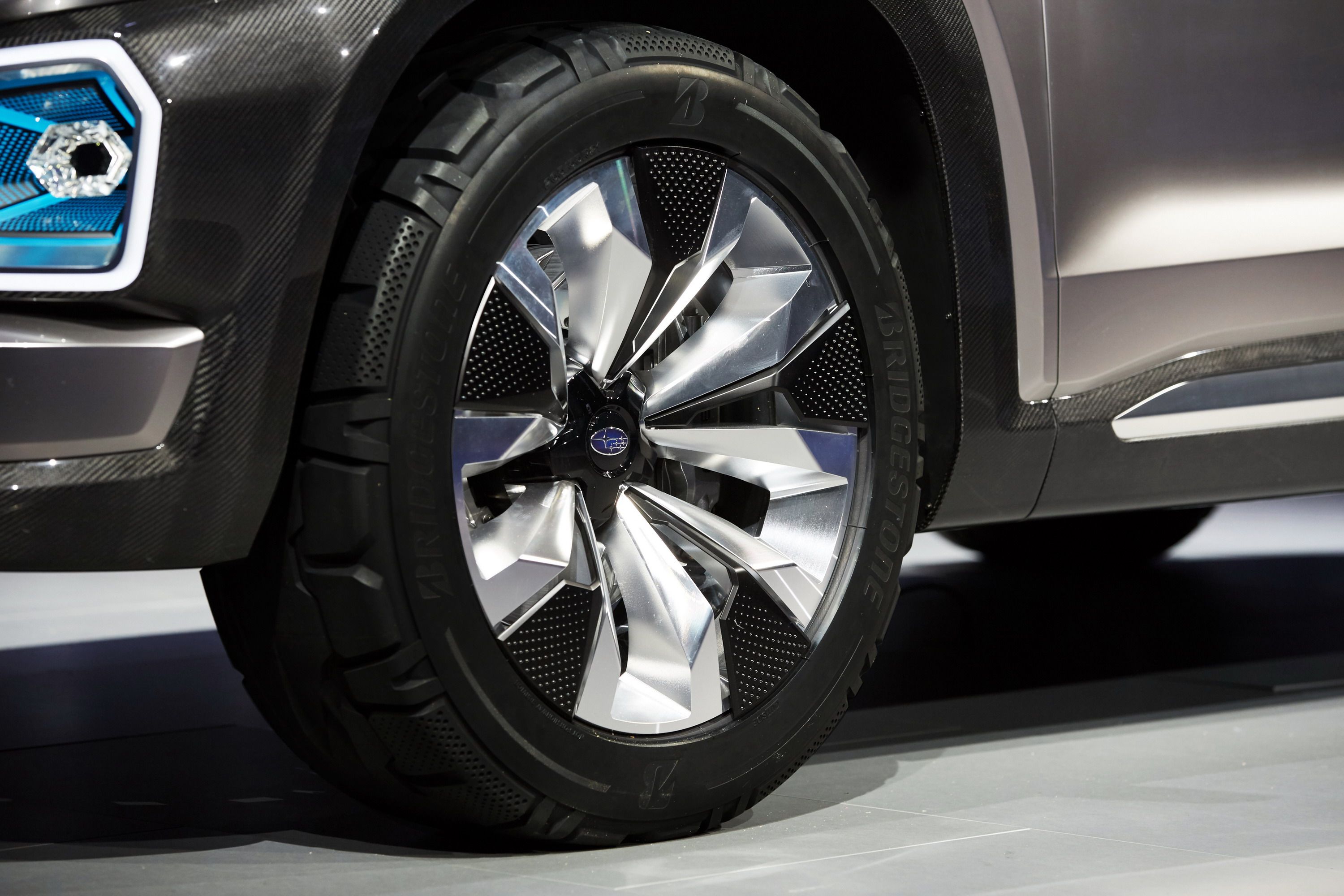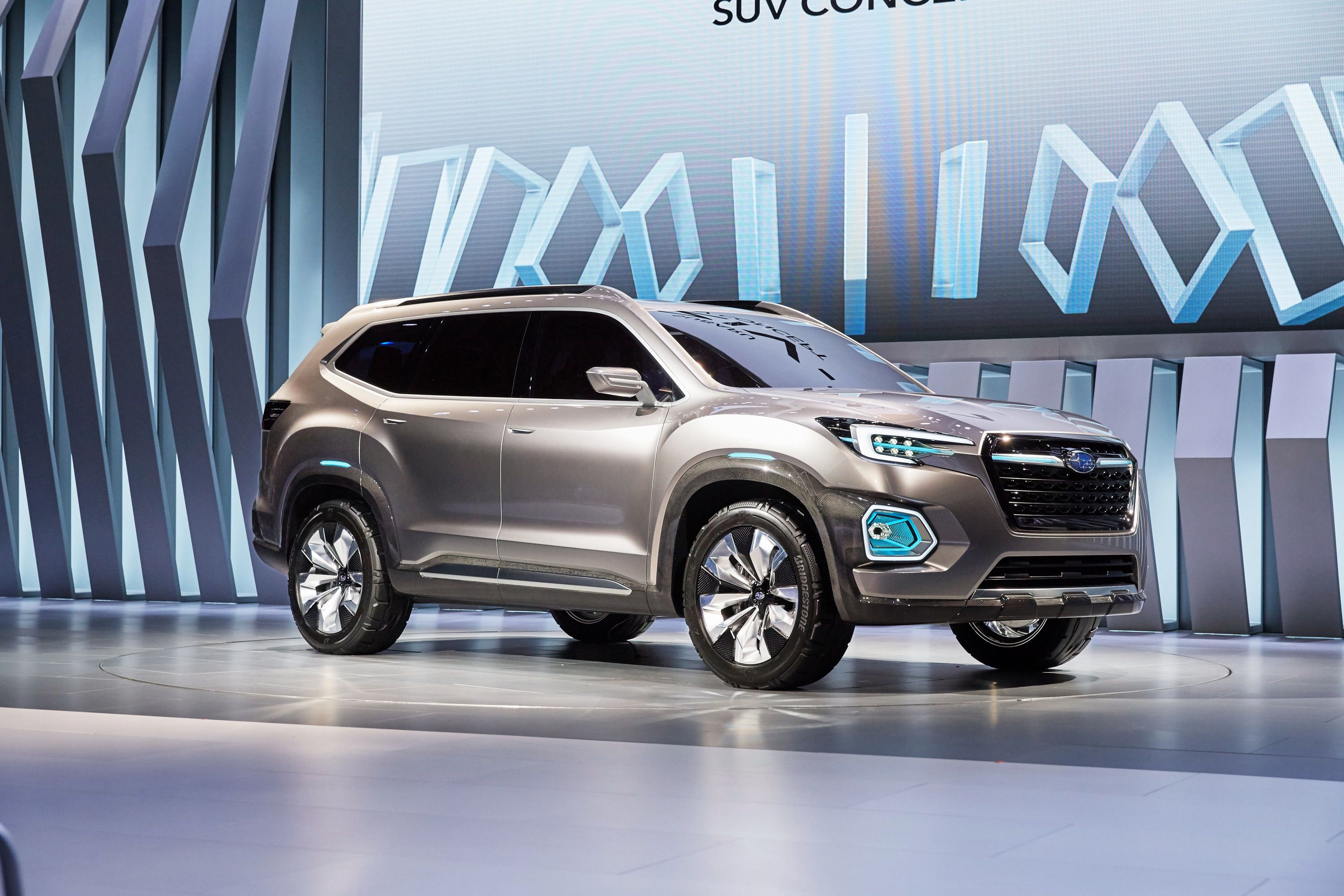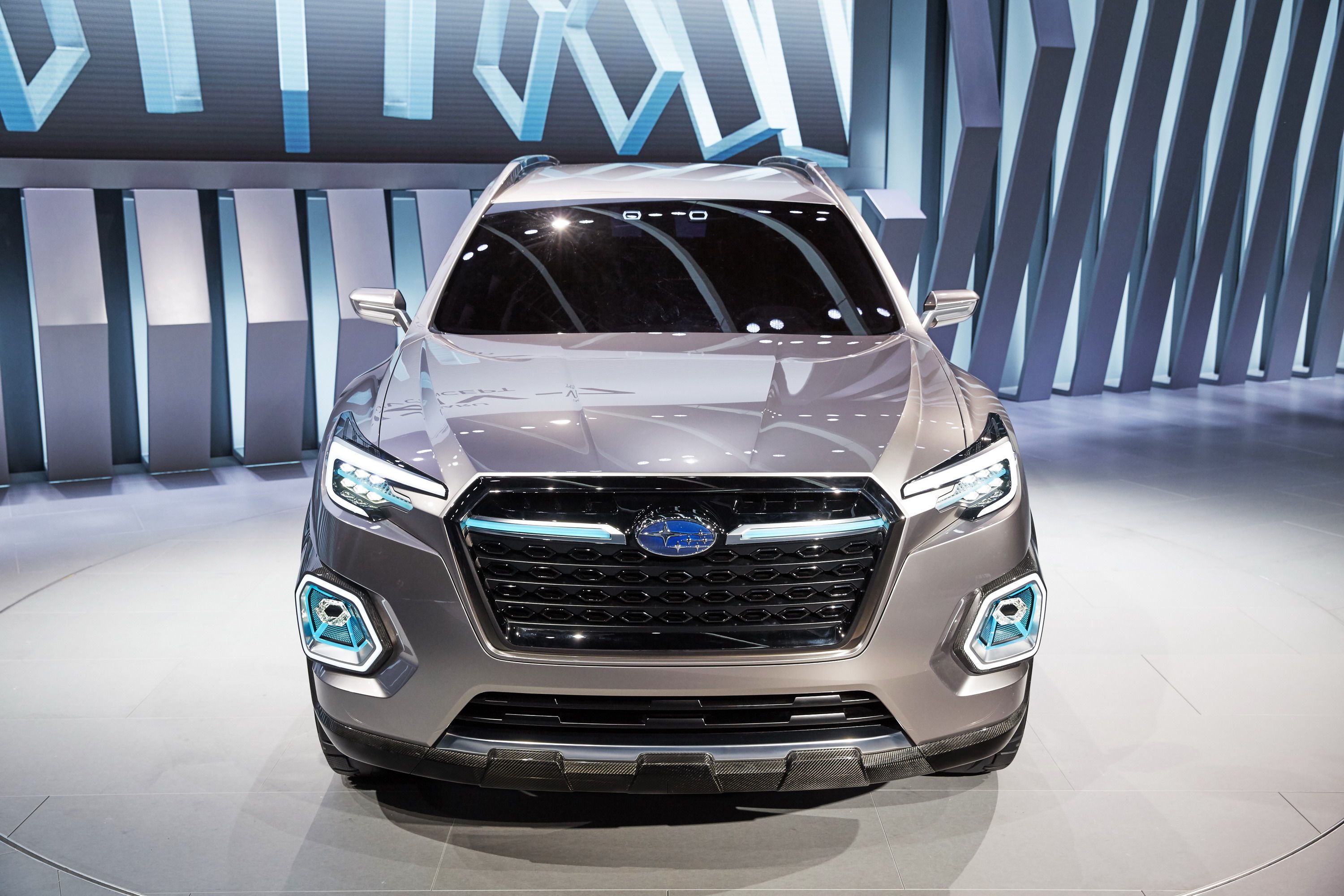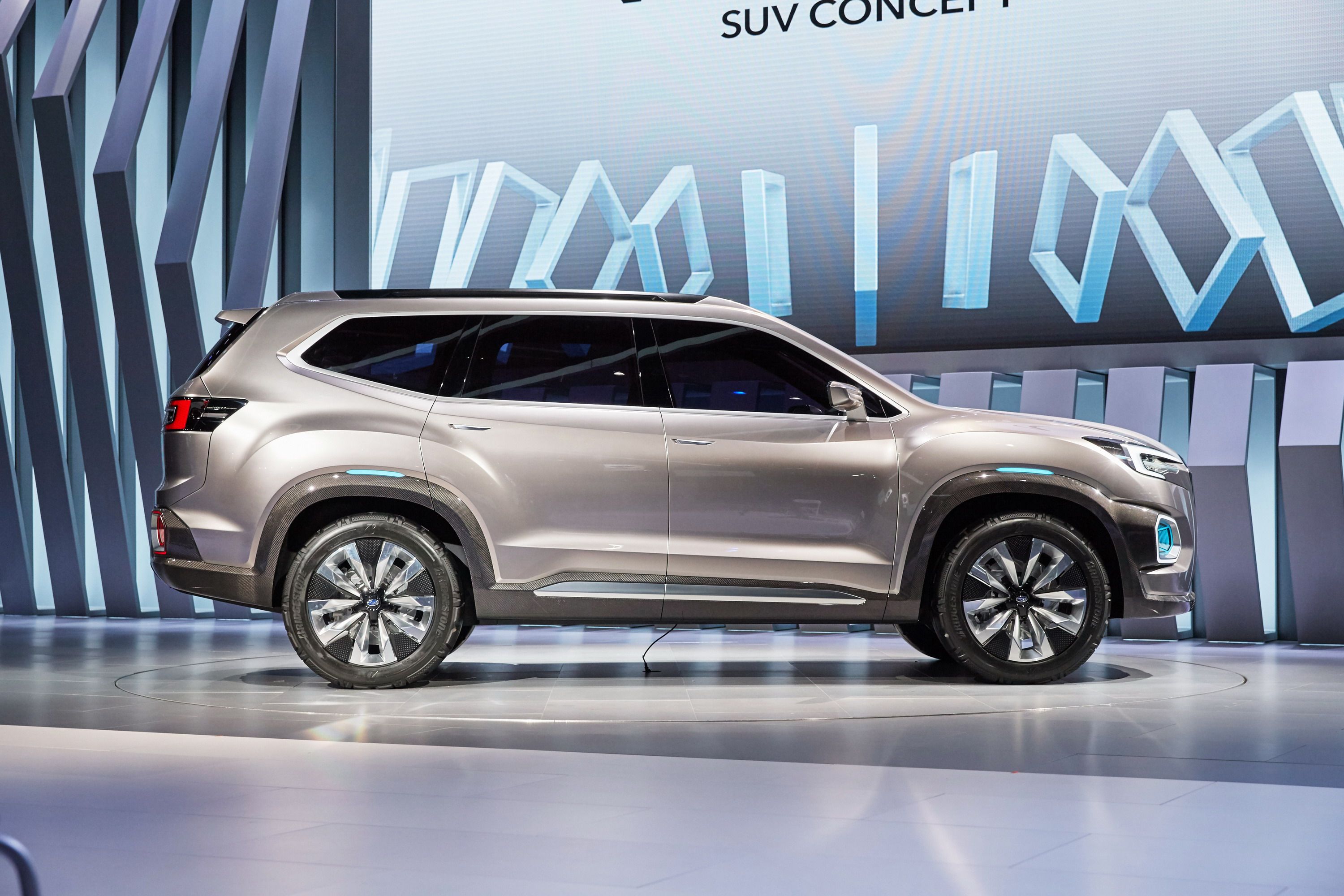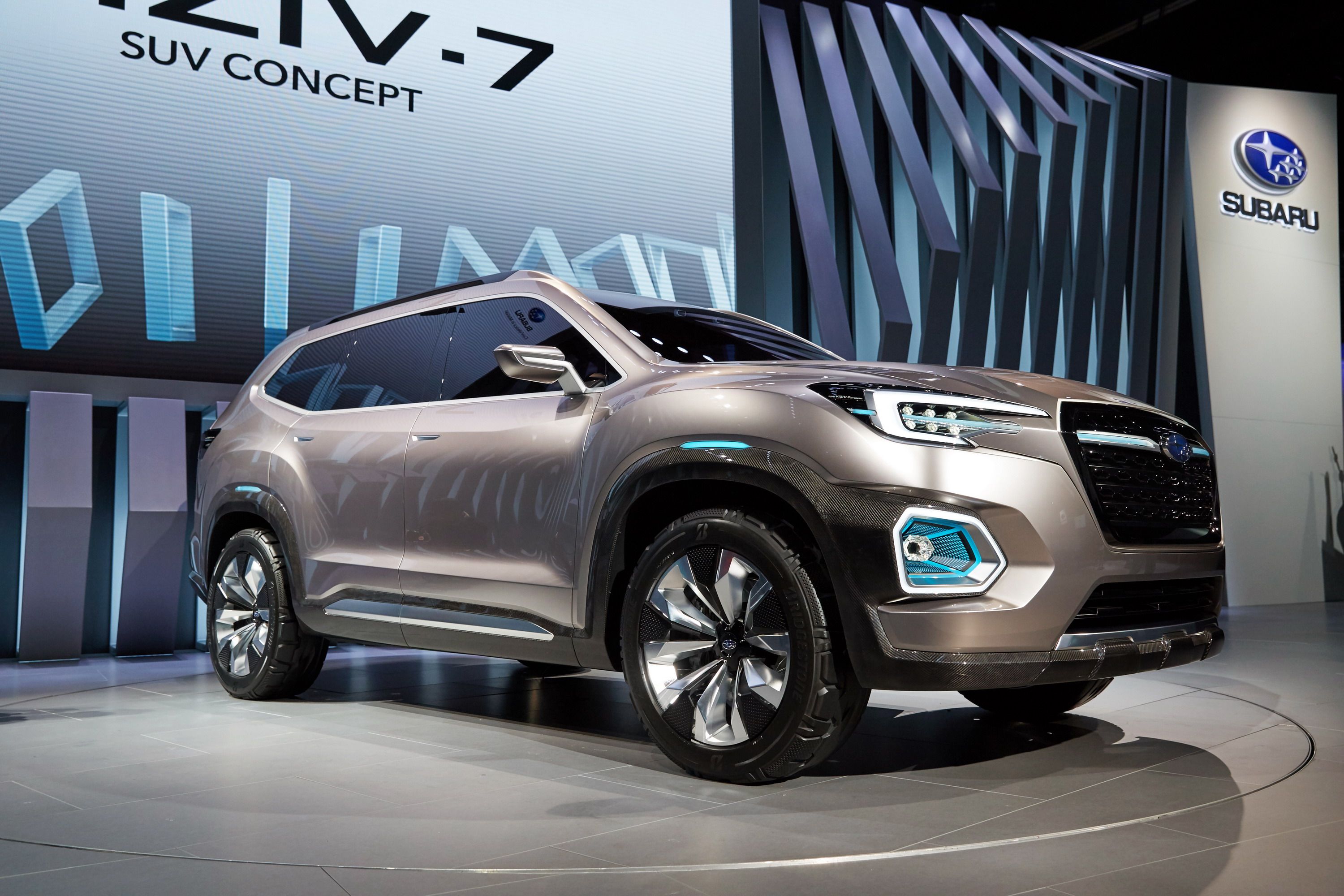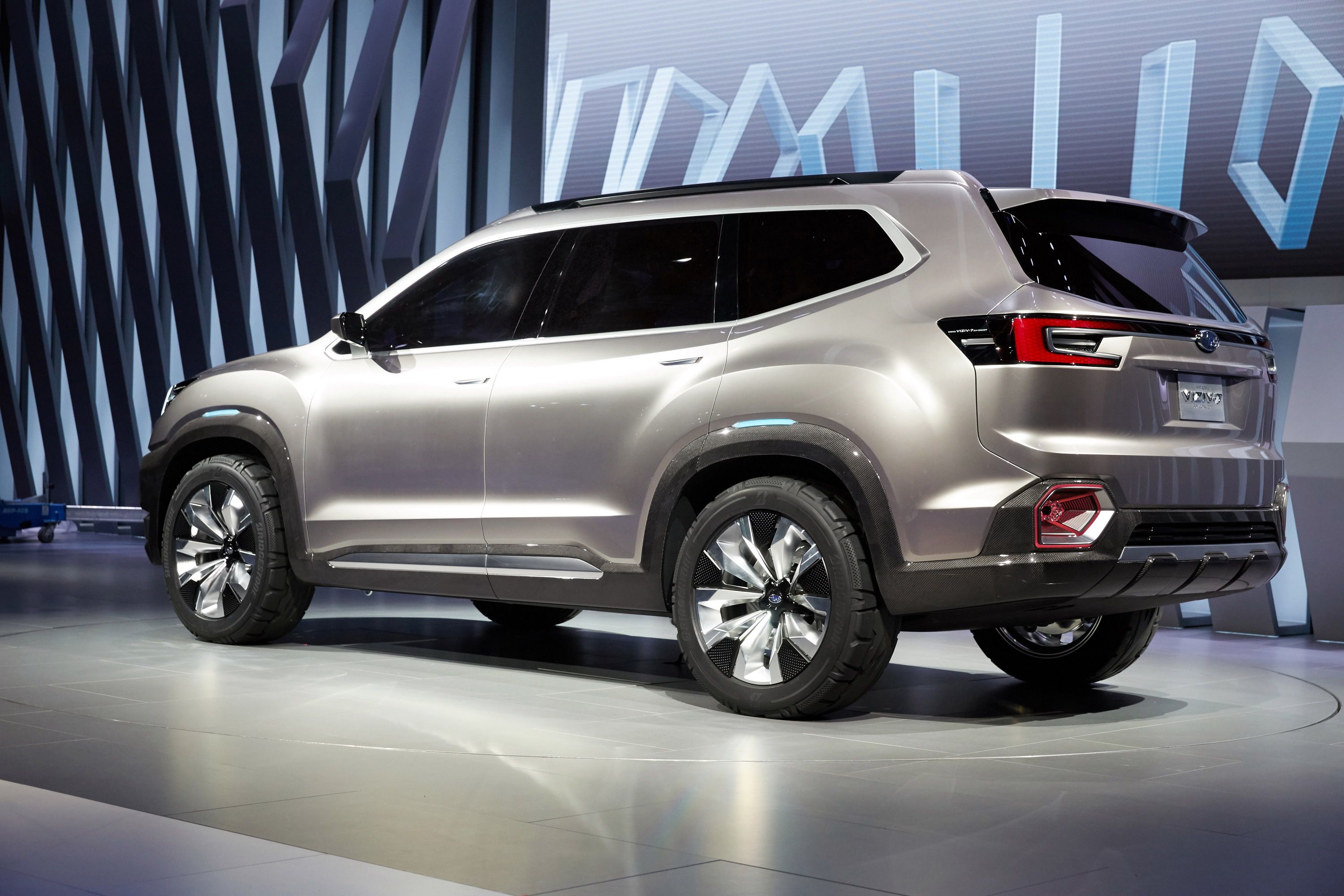Does the Viziv name sound familiar to you? Well, it should because that’s the name Subaru has used for a large SUV concept not once, not twice, but now three times. It started back in 2013 with the Subaru Viziv Concept that debuted with a funky set of side doors at the 2013 Geneva Motor Show. A couple of years later, Subaru showed up at the Tokyo Motor Show with the 2015 Subaru Viziv Future Concept. That second iteration was more toned down that then first – the funky doors were gone – but the interior was still heavily futuristic. Fast forward to the 2016 Los Angeles Auto Show and Subaru was back at it again with the Viziv-7 Concept, a model that showcases what a large, three-row SUV from Subaru will look like when it makes its debut in 2018. To date, we have yet to see the inside of the concept – the doors were even locked at the show, with the interior hidden away by tinted windows – but as far as the exterior goes, this baby is ready to go into production.
As far as SUV’s and crossovers go, Subaru doesn’t have much. There’s the Compact Subaru Outback, which isn’t really as much a crossover or SUV as it is a wagon with jacked up suspension. Then there's the Crosstrek, which is an Impreza with a raised roof and suspension, and then there’s the Forester, which in every sense of the word is an SUV, but it’s still in the compact segment. That means that Subaru has some room to grow if it really wants to compete in the world of gas guzzlers that is the American SUV Market. The production model derived from the Viziv-7 will fit more in the large-SUV category and will compete against the likes of models like the GMC Yukon, Toyota Sequoia, Nissan Armada, Chevy Tahoe, and Ford Expedition, to name a small handful.
Needless to say,Subaru has its work cut out for it if it expects its newest SUV to gain any traction at all in the market. The competition is stiff, and for folks buying in this segment, fuel economy isn’t as important as the number of passengers something can haul or the cargo space available. With that said, let’s take a better look at the Viziv-7 concept and talk about what we can expect from the future model it represents.
Continue reading to learn more about the Subaru VIZIV-7 SUV Concept.
2017 Subaru VIZIV-7 SUV Concept
- Make: Array
- Model: 2017 Subaru VIZIV-7 SUV Concept
- [do not use] Vehicle Model: Array
Exterior
Considering Subaru as said very little about the interior, what powers this concept, or what will power the production model, the exterior is the real bread and butter of this concept. Up front, the Viziv has a massive radiator grille that is filled with a large insert that has hexagonal cutouts for air flow. The Subaru emblem sits toward the top, with a chrome element flanking either side. Down below, a large air dam makes up most of the center portion of the fascia and features a chrome element at the bottom. On each corner, there are highly dramatic cutouts that serve as a home for the fog lights that are outlined with large LED strips for running lights. The headlight units are also LED in nature and feature a backward “C” LED strip that serves as additional running lights. The concept doesn’t expose any turning signals or amber running lights, so those are either built into the LED headlights, or the running light strips change color as needed – the latter would be more likely in the strip around the fog light bezels. The cladding that runs along the lower edges, and around the wheel arches, also feed into the front fascia around the fog lights, giving this concept a very unique look.
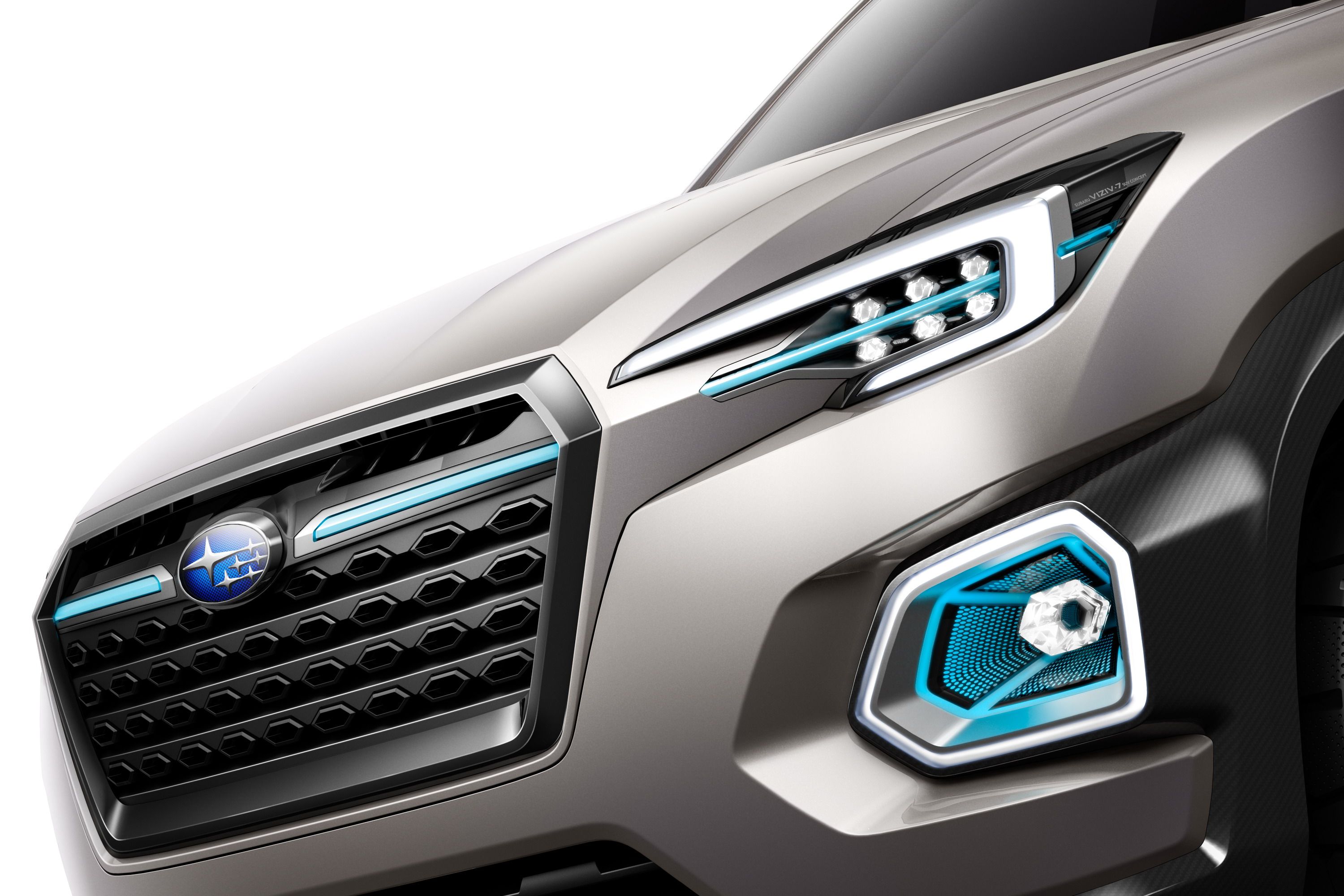
|
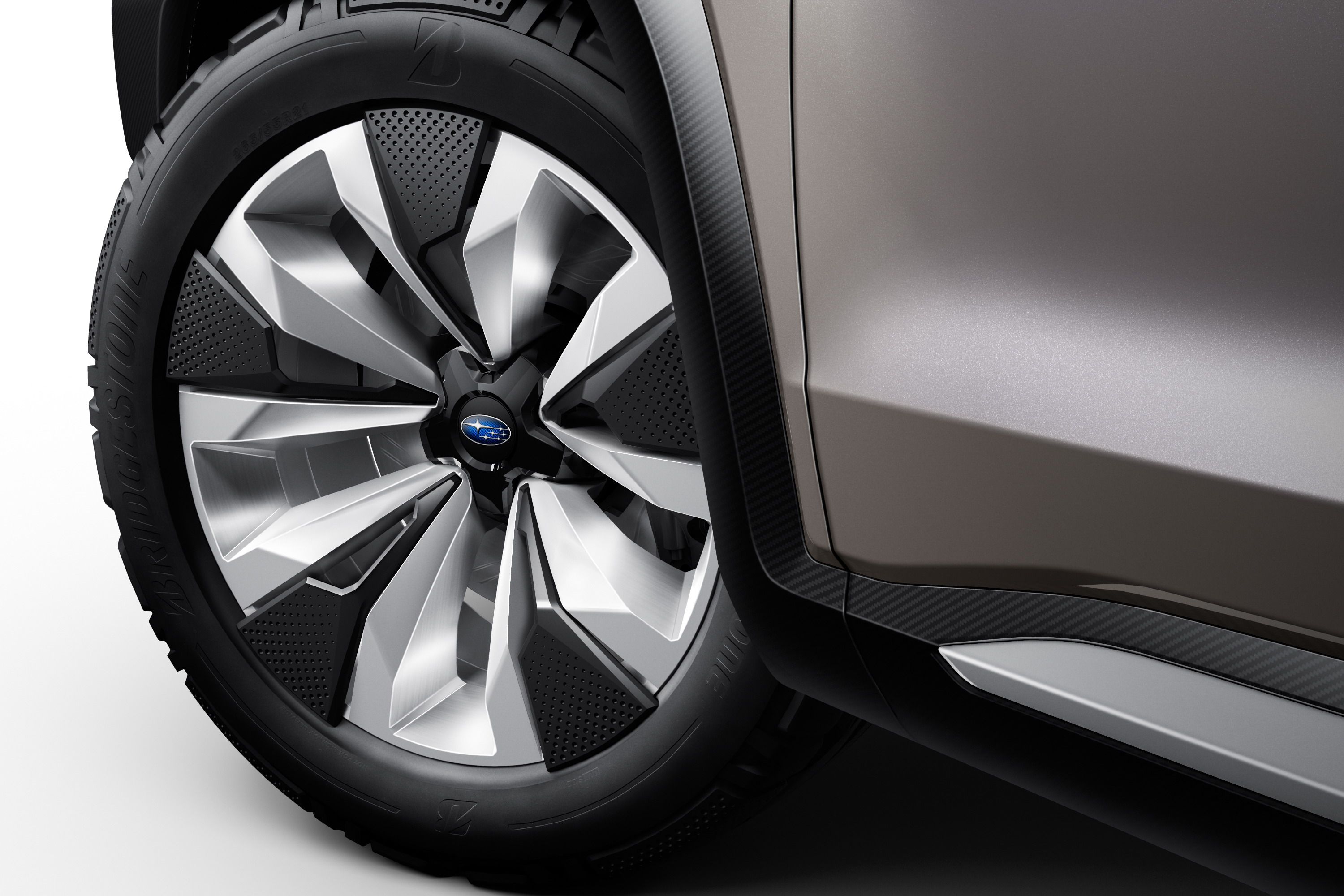
|
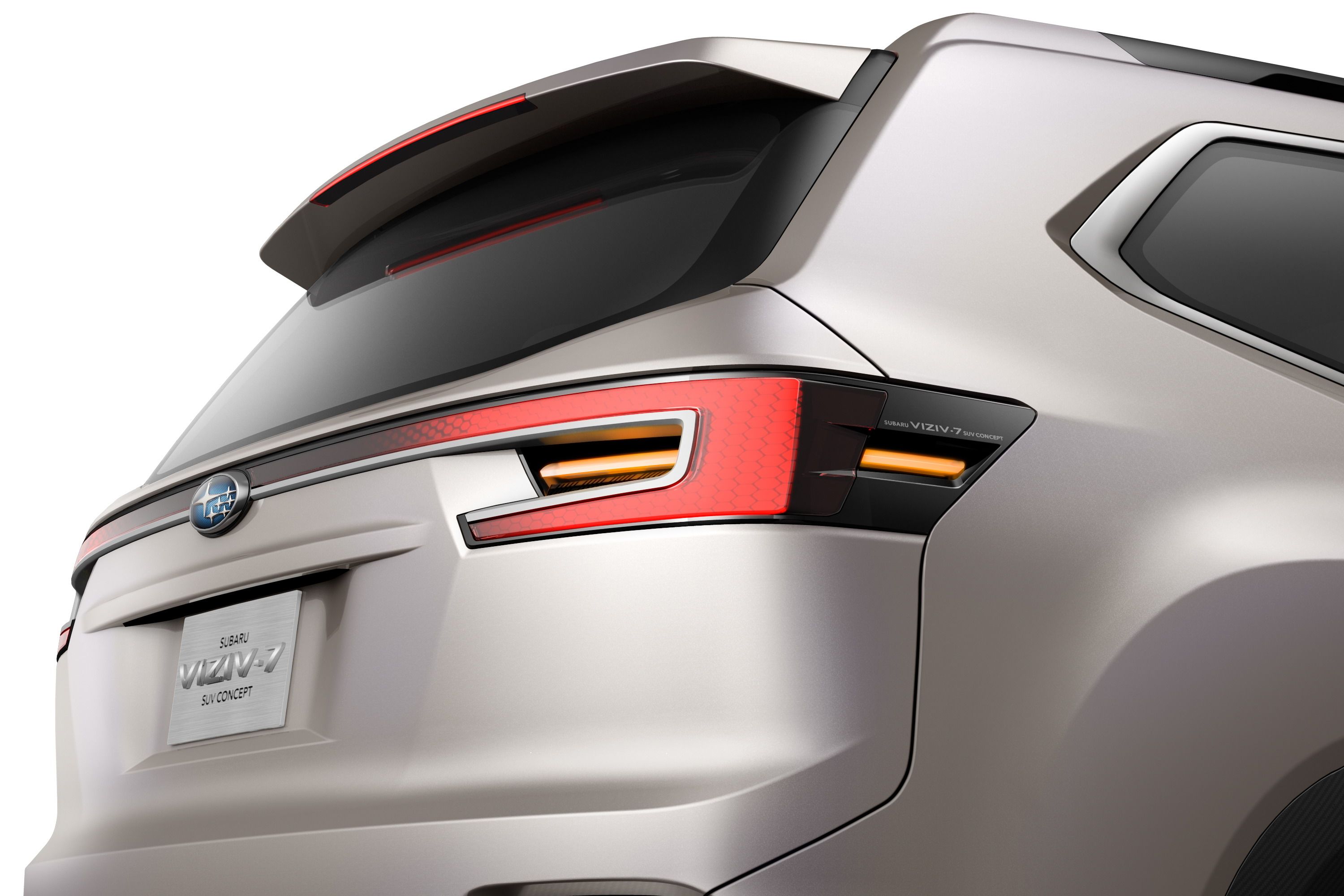
|
Moving over to the side profile, we see lots of standard design cues that just scream “production ready.” The wheel arches are accented by the same body cladding as the side skirts and lower fascias, with each wheel arch have a small, blue LED strip at 12 O’clock. A chrome element resides in each side skirt for extra character and is emphasized greatly by the sharp and straight body line that is formed by the lower portion of the doors. Farther up a shallow body line dips down from the waistline and shoots rearward along the same plane as the door handles before swooping upward and accenting the shape of the rear quarter glass. Roof rails look like they are built into the body shell, but feature carbon fiber inserts that match the lower body cladding. On the production model, these could be removable or adjustable. The door glass and rear quarter glass are outlined by chrome strips while very thin side view mirrors provide visuals of the rear corners.
Around back, we see what is quite possibly the best looking rear end that we’ve ever seen on a Subaru. A small overhang casts a small shadow on the rear hatch glass, while the hatch gets wider below the glass. The taillights have an LED dot matrix to them and run the full width of the rear end. The tips of the lights wrap around onto the rear quarters a bit, but outside of a small grove where more lighting could be added, there’s nothing eventful there. Down below, the reverse lights are built into the rear fascia, and feature red LED strips around the outside edges. These undoubtedly will work as taillights and running lights, while the upper LED lighting will also serve as running lights and get brighter when the brakes are pressed. The entire fascia is made up of the carbon fiber cladding that covers the rest of the SUV’s lower extremities.
All told, it’s a beautiful exterior design and could lead to Subaru’s next SUV being a big hit. Here’s to hoping it doesn’t lose all of the cool LED lightly and general design as Subaru shifts it into production.
Interior
Subaru has said next to nothing about the interior outside of the fact that it has three rows of seats that can seat up to seven people. Outside of that, it’s a complete mystery. We might be able to get some kind of idea by looking at the interior design of the 2017 Subaru Forester. It features a tall and thin center stack that is graced by a large infotainment display and a three-knob HVAC control unit. There’s a smaller display atop the dash that provides information like the time, temperature, miles until empty, and instant fuel economy. I wouldn’t be surprised to see this dash design, albeit a bit larger, show up in the production version of the Viziv. It should be noted that the instrument cluster or the Forester is very stylish with light-blue backlighting and a dual-gauge setup with a small TFT screen in the center.
Note: Subaru Forester interior shown here.
If Subaru does borrow some DNA coding from the forester, expect to see a low-sitting center console with plenty of storage cubbies and vents in the rear to help provide rear passengers with comforting air. I wouldn’t put it past Subaru to install vents in the roof as well – it’s something large SUVs have had for more than a decade and helps keep things warm, or cool, in the rear. One thing that will be interesting to see is what Subaru will do to make access to the rear seats easy. It could be as simple as the seatbacks of the second row folding forward, but the real question is, will it be electrical or will you have to put in effort to access the rear?
With that said, it’s a little disappointing that we can’t get a good look at the inside, but for now we can at least speculate and hope. The production model will be teased sometime next year, and with any hope, we’ll get some good spy shots. But until then, keep dreaming of what the interior could look like.
Drivetrain
Just like the interior, Subaru has nothing to say about the drivetrain. Of course, this is just a concept, so it’s quite possible there’s no drivetrain at all. The exterior yields nothing in the way of exhaust outlets, but don’t take that for what it's normally worth, as I highly doubt Subaru is going to put this much time into a large SUV when it hasn’t done a whole lot as far as electrification goes. The production model this concept represents could be powered by the same 2.5-liter that is found in the Forester. It delivers 170 horsepower and 174 pound-feet. Hopefully, Subaru won’t shoot itself in the foot by going with something that produces so little – especially when you consider towing capacity would be next to nothing with so little power. There is a 2.0-liter that’s available in the Forester 2.0XT premium. It pumps out 250 ponies and 258 pound-feet but compared to the competition; that would still be pretty underpowered.
If Subaru really wants to compete, it needs to go with something that pumps out at least 300 ponies and can pull at least 5,000 pounds. There isn’t anything in its lineup that could really do that, so it’s quite possible that Subaru will develop a new engine, or heavily revise one of its withstanding units to make the production SUV a prime competitor. And, the production model should be available with Subaru’s awesome all-wheel drive. Until we get more information on the production model, however, we’ll just have to wait.
Conclusion
I have to say that I’m rather impressed by the work that Subaru has put into this concept, and it’s clearly a huge hint at what is to come in 2018. I really wish we could get a better idea of what to expect by looking at the interior and going over some drivetrain specs, but at least we can get a good idea of what it will look like. The fact that the exterior is pretty much production ready – I’m hoping all of the LEDs carry over – tells us that it won’t be long before we see a real-life prototype testing in the wild. With so much strong competition Subaru really needs to hit a homerun with its large SUV, but, if the looks of this concept are any indication, Subaru just might do well come 2018. What do you think about the concept? Let us know in the comments section below.

